#Mastering Japanese Scripts
Explore tagged Tumblr posts
Text
3 Japanese Writing Systems: Kanji, Hiragana, Katakana
In this post , you will learn on 3 Japanese writing systems. Check out my japanese products [here]. The Japanese writing system is a fascinating and complex blend of different scripts that evolved over centuries. For anyone looking to learn Japanese, understanding these scripts is essential. This post delves into the intricacies of the Japanese writing system, exploring its history, structure,…
#Effective Japanese Learning#Hiragana and Katakana Guide#japan#japanese#Japanese Language Alphabet#Japanese Language Tips#Japanese Script Differences#Japanese Writing for English Speakers#Japanese Writing System#Japanese Writing System History#kanji#Kanji Characters Explained#Katakana for Beginners#language#language-learning#Learn Hiragana#Mastering Japanese Scripts#Understanding Kanji
4 notes
·
View notes
Text
angry post
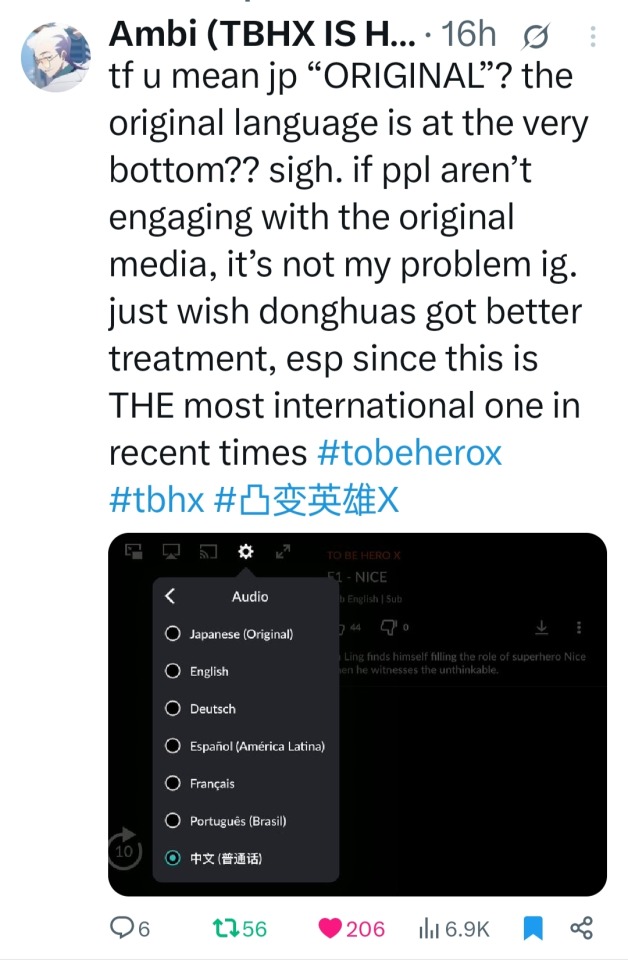
i have a personal problem with this kind of attitude. it's not a petty thing i am unreasonably angry about. there is a politics of translation and it affects one's understanding of art and popular culture/cultural geopolitics.
yes, tbhx has an unprecedented world wide release for a donghua/Chinese media and it's vital for its popularity, especially among transnational fandom spaces. Transcreated works are important for easier access. BUT, my gripe with the Japanese dub of a Chinese media WILL never be resolved. I am not talking about the quality, the issue lies in the very creation of the Japanese dub of a donghua itself. Let me give you an example.
Last year, we had an optional course called translation studies and one of the first things our professor asked was : who are the writers of A Doll's House and Waiting for Godot? He told those few of us who had read these texts closely to shut our mouth and let others take a guess. Most people answered : British writers. The texts are English texts. Because it's so famous among literature enthusiasts and when a piece of literature has a 'classic' tag attached to it, we tend to generalize and oversimplify it. So, a Norwegian playwright's original Norwegian play or an Irish playwright's play originally written in French- both get labelled as British literature. Get my point?
The anime industry is justifiably dominated by Japanese productions but when we forget to accommodate the nuances, the origin culture decays. It is, in many senses, a form of subtle cultural imperialism brought by ignorance.
People complain about Link Click's 'poor marketing' but I think Haolin was clever doing so. Even in the reviews by Indian anime bros™ I see them trying to pronounce 'donghua'. People RECOGNIZE that Link Click is a Chinese media, it's NOT an anime. You may laugh at those link click related youtube video titles saying stuff like : China is taking over anime, this Chinese anime is better than your favourite anime, PEAK Chinese anime, the best anime of 2021 is NOT Japanese?!, Link Click is taking over anime, China's hidden gem, China might have created the best anime of the year- CHINA IS IMPORTANT.
Whenever people talk about Chinese donghua- Link Click, Heaven Official's Blessing, Master of Diabolism etc are mentioned and people KNOW that it looks like anime but not really anime. It's... something... something else. This distinction is critical and essential.
Now, thanks to censorship (the Chinese version is not available on any official platform), many people think (not all people dig that deep while watching things, like come on) Spiritpact is a JAPANESE anime. Who the heck is Tanmouki or whatever. They are are Duanmu Xi and Yang Jinghua.
Reading up to this part if you think I am a Japanese anime hater then...*sighs*. Please read the whole thing again.
I like the Japanese dub of Link Click but there was a c*** in the comments who said "uwu it's not in japanese so I won't watch it" b**** doesn't even understand Japanese. B just wants an 'authentic Japanese anime experience.'
I feared that tbhx would face this issue.
And if you find those people who go : Ahhh, Japanese or Chinese- same thing, even their script look similar- fuck you, fuck you, you loser-fuckrr sinophobe i hope your phone battery dies your charger malfunctions your phone your laptop restarts with all data erased I hope you reek of wet socks and your taste sand all the time fuck you
#translation#politics of translation#Chinese media#donghua#sinophobia#link click#shiguang daili ren#时光代理人#tbhx#to be hero x#angry rant#rant post
488 notes
·
View notes
Text

Toru Takemitsu and Shuntaro Tanikawa
- X (Batsu)
1960
Another well-known neo-Dadaist film, X (Batsu), follows the progress of an everyman through an urban wasteland. It was made by the celebrated poet Tanikawa Shuntaro. who is a master of common language and wrote many film scripts and texts for photography books. with a soundtrack (subsequently lost) by the composer Takemitsu Toru. This everyman marks everything he encounters with an X, from telephone poles to fruit and books he fondles in markets to a woman he pursues who lies on the ground, first clothed, then unclothed. As he caresses her back. he puts X's along her spine. Later, when he draws an X on a storefront. he is beaten and dragged off by businessmen. The allegorical batsu can be either consent or rejection, or the mark of individualism. putting an identifying (or accepting) mark on the world. -- Japanese Art After 1945: Scream Against the Sky (1994)
37 notes
·
View notes
Text
Ink!Sans Cultural Character Coding (OUTDATED)
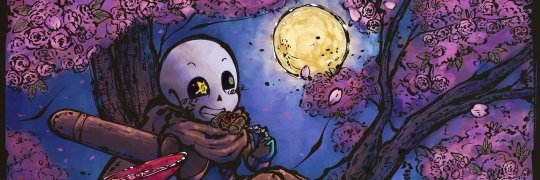
art by @/sakuramochi64 on twitter
Disclaimer!
This post is meant to present and analyse obvious and obscure East Asian (Jpn-Chi) ethnic and cultural influences on Ink!Sans character. If any of the material in this essay is incorrect and/or considered morally offensive, please contact me!
Ink!Sans by @comyet
↓↓↓↓↓↓↓↓↓↓↓↓↓↓↓↓↓↓↓↓↓↓↓↓↓↓↓↓↓
/Despite the fact that Ink is a non-human monster skeleton character, he is often portrayed with human-like traits and characteristics that range between a bunch of topics. One of them that's portrayed as very predominat to his character is his etchnic cultural background/inspiration. Again, this post is meant to analyse and to discuss such inspirations and how it affects his character./
.
.
.
INSPIRATIONS
According to Ink's creator, Comyet, the concept of Ink!Sans was conceived by a Japanese and Chinese ink calligraphy brush. These are known as Fude brushes (筆) and Xuan brushes (宣笔 Xuān bǐ) respectively. This ultimately inspired his ink abilities and powers, just like his concept of being an 'artist' (In simple words, it inspired Ink as a whole).
'The history of ink brushes and the ink material is a long and complicated journey to cover, but it's important to know that these were invented in ancient China around 300 B.C (traditional Chinese: 毛筆; simplified Chinese: 毛笔; pinyin: máo bǐ) and are used in a vast variety of East and Southeast Asian countries, like Korea; Vietnam and Japan.
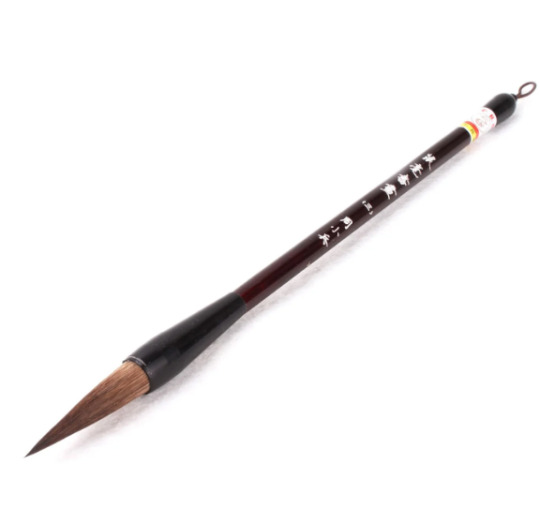
example of the brush Ink!Sans was inspired by.
At glance, ink (the material) is an enduring medium that still surrounds society till this day and it's used in multiple cultures across the world.
Writing with ink calligraphy brushes are common in the Europe and the Middle East as well, but the material was crafted of iron salt and oak galls. When written, ink is often a dark color but fades to brown tones of rust'. Such phenomenon was detectable in the Middle Eastern Bible manuscripts and even ancient European literature as an example.
Ink!Sans was based of the ink material created in East Asia, most commonly made with carbon-base black substance, which preserverd the dark coloration even after hundred of years.
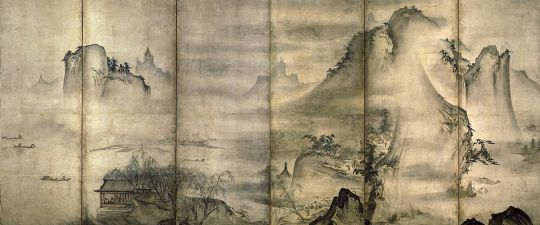
↑ Example of an ancient Japanese painting, such arts are called 'Sumi-e' (Japanese, 墨絵) or ' Shuimohua' (traditional Chinese,水墨畫).
Unlike iron gall ink, carbon based inks are still very common to this day.
'Throughout the long history of East Asia, writing with ink was a very important ability to have. The Materials were made with precision, long traditions of training in calligraphic skills were developed, and writing and literacy were often wrapped up in questions of social status and class.
Although the development of major Chinese calligraphic scripts was completed by the fourth century, the art of calligraphy continued to evolve over the millennia. Master calligraphers with years of training and dedicated practice were recognized for their personal styles, and later generations of artists often adapted brushstrokes and designs to their own style. This stylistic evolution of scripts continues to enliven Chinese calligraphy to the present day.
Calligraphy was an important mark of personal learning and aesthetic sensibility in Japan. Portable, lacquered wood boxes were designed to hold an inkstone and water dropper in the base, with trays to hold writing brushes and solid ink sticks. Inkstone boxes (硯箱,suzuribako 'ink stone box' ) could be easily carried to a pleasant location, even outdoors in fine weather, to write correspondence, diary entries, or poetry.'
Fun fact: Ink's font 'Note This' is inspired by such ancient writing.

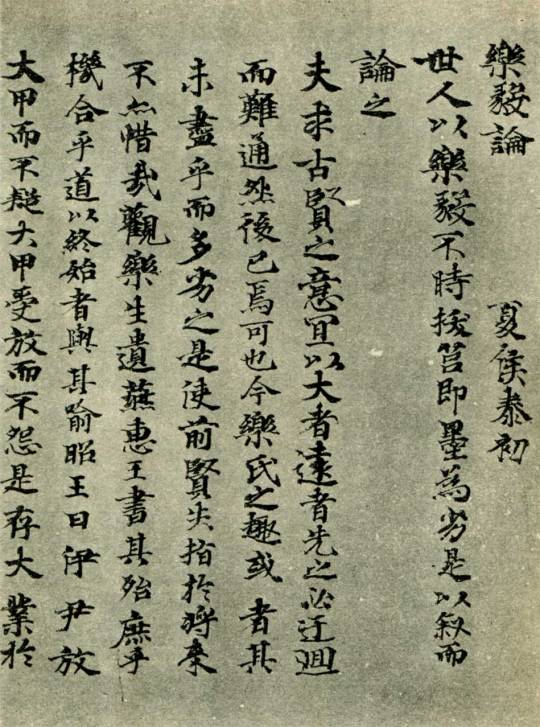
Example of Ink's canon speaking font and Japanese calligraphy (書道, calligraphy)
'However, when it comes to the subject of painting with the material, different schools of painting existed in China, the scholar-painters of Song-dynasty China generally preferred ink-based paintings over the more colorful, pigment-filled paintings produced historically and at the painting academy. Chinese painting manuals and commentaries from the Song (Sung) and Yuan dynasties (rarely mention pigments, possibly because it was assumed a painter’s skill shouldn’t depend on the use of colors.
Japanese artists are known for using media appropriate for the subject matter. Images depicting traditional Japanese narrative tales were typically rendered in opaque colors with outlines created in ink and later obscured by color overlay. Ink monochrome was closely associated with Chinese styles, particularly those transported to Japan via Zen Buddhism. Ink-based forms created with modulated strokes and layered washes suggested introspection and spiritual exploration.'

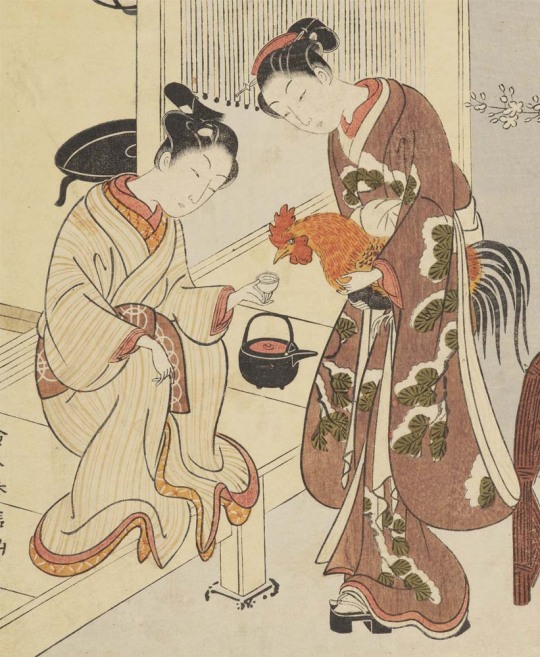
Ancient Japanese paintings that uses dull colors and ink outlines.
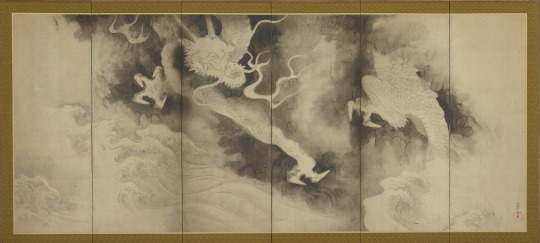
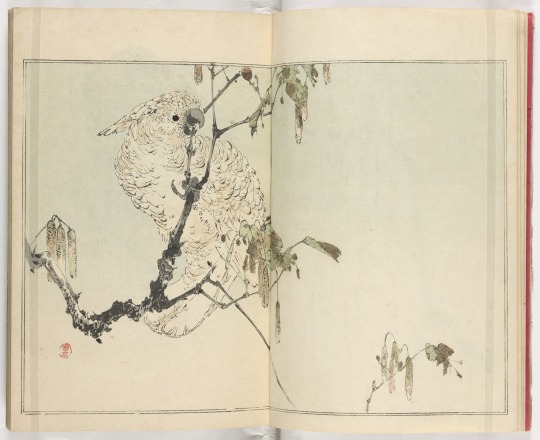
Exhaustive examples of ancient Ink paintings. Dragons and Clouds 雲龍図屏風 (左隻)and Seitei kachō gafu 省亭花鳥画譜
.
.
.
DESIGN
Also clarified in an ask on her main blog, Comyet describes that traditional Japanese clothing inspired Ink's 2020 outift redesing, such inspirations are very obvious in first and second analysis.
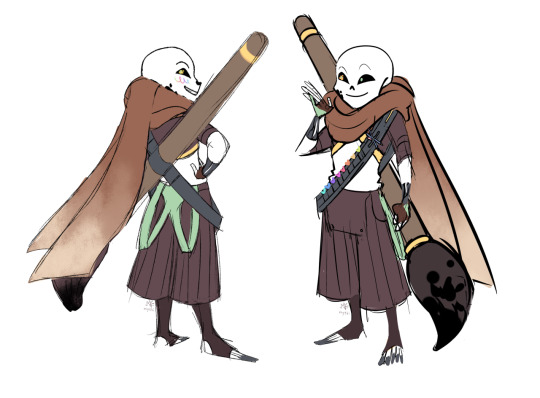
Ink!sans reference sheets for the 2020 design, which can be found in Ink's official F.A.Q
Starting off, the pants.
Ink's pants were inspired by Hakama pants (袴), a traditional Japanese garment designed as a skirt-like pants often worn over any type of kimono. His pants seems to be inspired by umanori (馬乗り)Hakamas, whose had a division in the middle and often used in horse-riding activities.
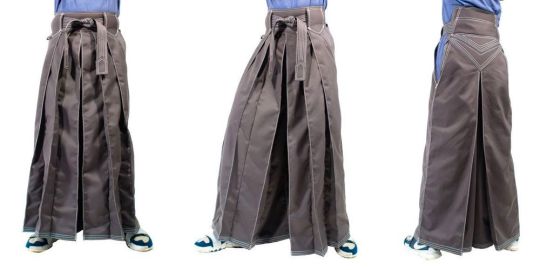
Example of a Hakama.
The Hakama is a wide pleated pants (seven pleats, five in front and two behind), with a rigid backrest (腰 板,koshi ita) placed at the level of the lumbar region. It is tightened with four straps, on the left and on the right, as well in front as behind.
Historically, the origins of the Hakama dates back to the Sui and Tan dynasty were this garment was worn by the Chinese imperial court. Later, the Hakama exported itself to Japan during the Kamakura period (1185 to 1332) and became a traditional garment for the upper classes of Japanese society as well as for samurai warriors who wore it over a kimono (Hakama-shita).
During the history of Japan, the Hakama took on different styles and was mainly made for men, although in the beginning it was a unisex garment. During the Asuka and Nara era (6th to 8th century), the Hakama came in two versions. The first one was open on the front and was tied on each side of the waist with two straps. The second one was open on the left side and closed on one side only.
During the Edo period, the Hakama was worn by the nobles as a complement to the outfits of the time such as the noshi and the kariginu (狩衣; a sleeveless jacket with very pronounced shoulders). Very functional, these pants were also adopted by samurai warriors who usually wore them as Kamishimo (上下/裃). It is a combination of kimono, Hakama and kataginu. When the warrior visited the shōgun, he wore a Hakama called naga-bakama which greatly restricted his movements.
Edit:Currently, hakamas are both worn by men and women.
However, under the scarft, Ink also seems to use a jacket that features a collar that has striking similarities to a Mandarin collar (or Mao collar)

Ink!sans reference sheets for the 2020 design, which can be found in Ink's official F.A.Q
Mandarin collars originated in ancient China and were worn by Qing-era bureaucrats.
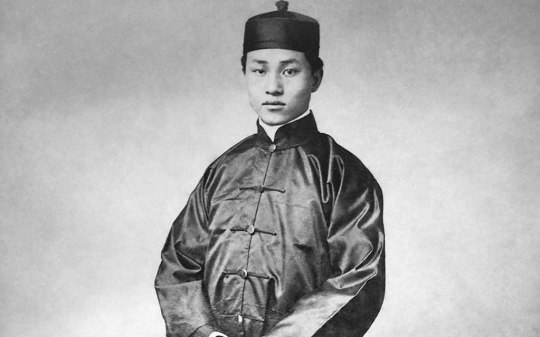
Picture of a Chinese man in a traditional Mandarin collar (early 1900's)
These are short, stand-up collars and sometimes fasten in the center with a small hook. Such collars are still used today for both fashionable and practical reasons. One example of modern usaged of the clothing is seen in the U.S Amry combat uniform, that features a stand-up collar of Chinese origin.

Picture of the U.S Army combat clothing
Regarding of color palette, Ink!Sans redesign uses soft but dull colors and a sinple silhouette and fabric for the outift, such design choises are similar to male kimono's dressing codes which uses dull colors (like dark blue, grey, green and occasionaly brown). Male kimonos are always more simple in design compared to female kimonos.

Photo that shows the difference of kimonos used by men and women
Although not specified, Ink seems to wear brown thigh-high socks, also known as 'tights' under the outfit. Japan has a long-standing cultural tradition of wearing such piece of clothing, this trend is particularly popular among young people and is often associated with the "gyaru" subculture, which emphasizes fashion, beauty, and individuality. Additionally, thigh-high socks are often worn with school uniforms, and are considered a symbol of youth and innocence. Additionally, it is also considered fashionable and trendy in Japan, and you can see many young people wearing them.
In regards of physical appearance, Ink also seems to follow ancient Japanese and Chinese beauty standarts, specially one's targeted towards women.
In ancient japan, specially towards the Nara (奈良時代, Nara jidai), Heian (平安時代, Heian jidai) and Edo period (江戸時代, Edo jidai) the beauty standarts for Japanese women were of those with slim eyebrowns, flat oval face shape and narrowed eyes.
Such attributes can be observed on Ink!Sans apperance.
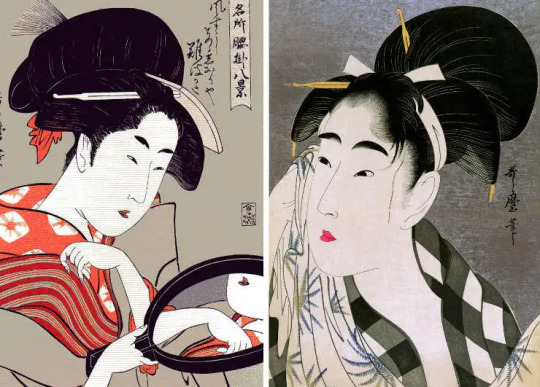
Visual representation of old Japanese beauty standarts
/Keep in mind that some of such standarts presented are now out of fashion due to the westernization of asian countries. Specially regarding eye shape/
.
.
.
MUSICAL THEMES
Ink!Sans has a long history of being associated with East Asian music, specially those of Japanese origin.
Themes that comyet associated with him includes, 'Code Wu- Asia River Album 江水/Asia River' ( post can be found here), 'Dullahan under the willows' and 'Futatsuiwa from Sado (二ツ岩で佐渡) both from the japanese game 'Touhou'. (post can also be found here.
He's also associated with East Asian musical instruments, something quite noticeable in Ink!Sans theme for the the web-series 'Underverse'. Such theme is called 'Brushwork'.
The theme starts with an instrument similar to a Shamisen (Japanese-三味線) and a Guzhen (Chinese-古筝) and also uses a traditional flute.
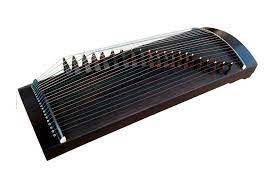
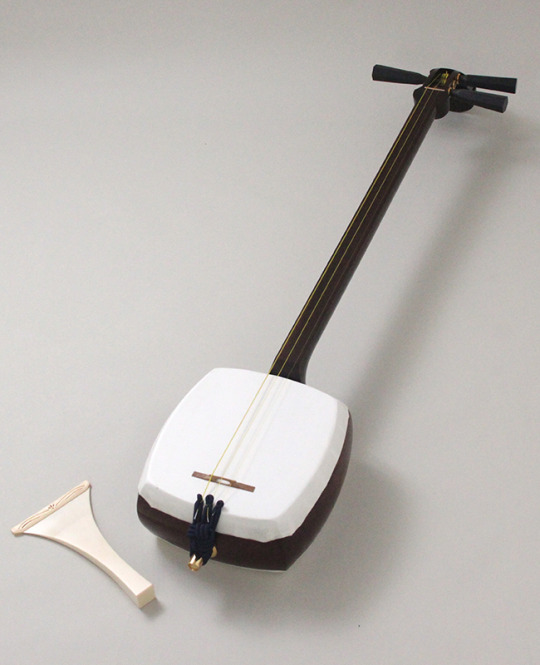
Photo of a Guzhen and a Shamisen, respectively
.
.
.
TRIVIA
On Underverse's opening for season 2, Ink!Sans can be seem between a field of Sakura trees or Cherry Blossoms (桜).
Cherry blossom trees are an icon of Japan. Some people even call the cherry blossom Japan’s informal national flower. The Japanese school year starts in April, during cherry blossom season. The flowers symbolize good luck, love, and springtime. Since they bloom for such a short time, cherry blossom trees also represent human mortality. They remind us how short and precious life is.
In the same series, Ink is also drawn in a Sumi-e inspired style for the 'Soulless Heart Instrumental' video. Such artwork features Japanese writing in black ink.
Ink's canon instrument is the flute. Although invented in ancient germany, the flute is highly associated with East Asian cultures and it's music, chinese and japanese culture are the main ones . Other than that, Comyet already made a connection to Ink's asian influence and the instrument itself.
According to research made by the University Microfilms International (UMI) affirms that the moderny performance and melody of the instruments has clear East Asian roots, mainly from Chinese and Japanese style of music.
'The flute is a particularly appropriate instrument for such a
study because of its versatility of pitch and timbre, the latter being
one of the most important elements in Eastern music; it is capable of
'pitch-bending' and infinite changes in tone quality which are impossible
to achieve on instruments of set pitch.
The flute music selected for stud/ shows varying degrees of Eastern
influence. Depending on the nature of the composition, the Eastern
elements may be extremely subtle and difficult for the untrained to
decipher; in other instances the composer makes clear those sounds or
concepts with Eastern roots, either through accompanying explanation or
within the context of the music.'
Sources
1.National Museum of asian art (materials & techniques. Ink section)
2. Asian Brushpaper (an-overview-of-chinese-ink-history)
3. Wikipedia (wiki Hakama-pants)
4. Aikido Journal (Hakama-101)
5. Wikipedia (Mandarin-collar)
6. Kirrin finch (What-is-a-mandarin-collar)
7. University Microfilms International (UMI) (east-asian-presence-in-modern-flute-music)
#ink sans#inktale#undertaleau#utmv au#ink!sans#utmv#inksans#undertale#east asian#au sans#sans au#cultural inspiration
435 notes
·
View notes
Note
What are your thoughts on the promo image of Miquella and Torrent? It might be the most baffling thing from the DLC, if not the entire game?
Ah, yes, that one time Miquella was riding Torrent in the Land of Shadow!

This question was actually good because it made me really think of origins of Torrent and certain things in timeline, and actually here not only Miquella himself is involved, but Renna / Snowy Crone as well! Okay let me explain my thought process now!
First off, I am pretty sure this scene is canon and not just a cool concept art to hype up the audience! For one, Torrent was burnt!

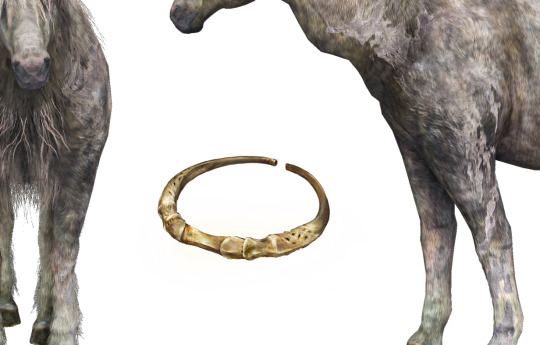
(Image by Zlofsky)
Considering the fact that he is so terrified of Abyssal Woods, that are scorched by the Frenzied Flame, however he is spectral (so, dead) and Frenzied Flame can burn even the spirits, I think it could be not just an instinctive fear but a memory!
The thing is, Torrent is bound to that golden ring, that also functions like a whistle! It is what we use to summon him, and in the Frenzied Flame ending, death of Torrent also makes the ring he is connected with to dissipate!
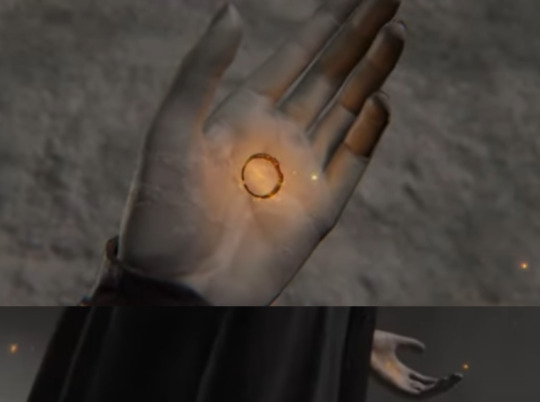
For Melina to have it to give to us to begin with, Miquella would have to return from the Land of Shadow and give it to her (if not to someone else and then Torrent travelling between owners?)! But there is a strong accent on how him leaving in the Land of Shadow was one-and-done thing:
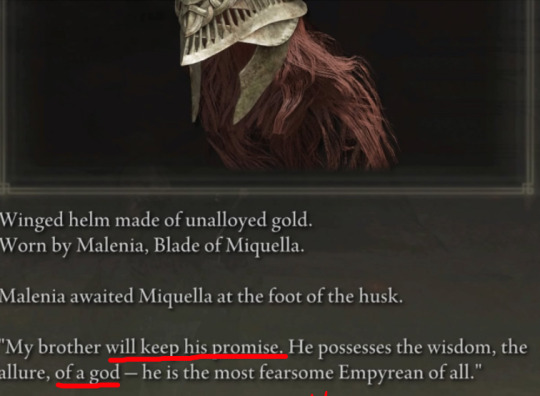

So, this travel was definitely not it, but him scouting the Land of Shadow first, figuring out everything about it, then returning and giving Torrent away! Before leaving in there in more planned and prepared way, and his final farewell, it is reasonable that he wanted to see the place and understand what he was getting into! And:
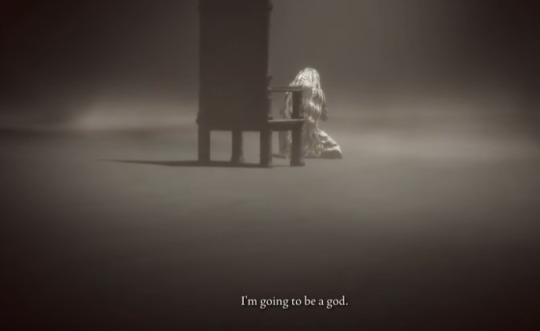
Yeah, he definitely had to know beforehand, and how exactly, if Land of Shadow was severed from the rest of the Lands Between? Because he checked and learned all about Divine Gate first!
Considering Torrent's horns and nature as a spirit, it is very possible that Miquella simply found a friend in the Land of Shadow and took him with himself! But there is also one thing revealed by Ranni that makes it more complicated for me at least, and this IS why I need to address Renna!
Ranni's dialogue: "I was entrusted this, for thee. By Torrent's former master" is a mistranslation! (pretend that you're surprised lol) The original dialogue says this:
お前に、預かりものがあってな トレントの古い主が、私に託したものだ
She says that she has something for us but gives it to us on her own volition, it was not Torrent's "former master"'s intention of request for us to have this bell! Besides, word 古い translated as "former" is not quite so accurate; it rather means something like ancient, of old times, of times long past, etc. Torrent had at least two owners (Miquella and Melina), and Japanese script suggests Ranni doesn't necessarily refer to Miquella!


Both servants of Revenaunts (often referred to as Wraith-Callers) and Renna (who Ranni's doll is based on) have four arms and blueish skin, and Wraith-Callers use bells to summon wraiths (who are also dead spirits that didn't return to Erdtree, only cursed)! Not only that, but they also summon spirit horses! The Spirit-Calling Bell is basically a "nice" version of Wraith Calling Bell! Ranni also gives us not only the Spirit-Calling Bell itself, but also spirit ashes of lone wolves; an animal explicitly stated to be connected with Carians! Not to mention how Wraith-Callers are THE most prevalent in Liurnia and the place where Cathedral of Manus Celes are!
Basically, there are too many coincidences and similarities to ignore, in my opinion. Meanwhile, Miquella is not thematically connected with anything regarding calling lingering spirits, as Eclipse returning the souls to the soulless was a whole different ritual! So why would he have the bell like this?
There is also no reason for him to give it to Ranni; it would be a strange gift to a Carian princess that could defend herself just well enough, and after Night of the Black Knives she dropped off the face of the history as far as everyone but little number of people is concerned! As for "Godwyn was a willing sacrifice" takes, in my opinion they are crashed against the fact that multiple Demigods and even two non-Demigod Carians got assassinated too! Miquella would not be that heartless; him becoming such is a result of the arc of abandoning his feelings in his quest in the Shadow Land!

What Miquella could have done though that is less drastic, was to bind Torrent to the ring (which is, notice, golden in color), so he would be summoned by the whistle of the ring rather than bell currencies! Torrent is a dead horse (🥁 ), and Land of Shadow got severed in such a way that only dead/spirits could enter it. So I think Miquella somehow used Torrent's aid to jump the border into Land of Shadow without having to die for it yet! Perhaps so could we if we knew what to do, or maybe only a Demigod could pull such a trick?
Meanwhile, Ranni has deep respect and gratitude for Renna, and would of course properly refer to her as the OG owner of Torrent! There is more on why Renna is Snowy Crone here ( x ), but basically both Renna and Torrent are dead and spirits! That would not be too strange if they bonded, again, since Wraith-Callers do also summon horses with timbres of the bell! There is also the fact that before he chooses us, he stays with Melina, who is also a dead spirit... I think this is just what he tends to do.

^^^ Also, an alternative idea:
Ranni's doll body already has a ring! It is the same model as the ring we put on her but without gem, but it is definitely not a mistake because they'd otherwise fix the model due to how close we see her hand! Whereas not golden, I wonder if the ring is a reference to Renna having worn a ring to the point it was crucial to copy that part! It not being golden is glaring, but might be explained with simplicity compared to having to remodel the golden whistle ring! So could Torrent have always been bound to the ring, and Renna was originally wearing it? I kinda like the idea of Miquella binding Torrent to a physical object more, but I still consider this one too!
_________________________
But yeah, in conclusion: 1) Miquella has been at the Land of Shadow scouting with the help of Torrent before returning from it, and Torrent being a spirit likely was the key 2) Renna being the OG owner of Torrent thematically fits more because similarities are very hard to ignore with how deliberate they look and 3) @heraldofcrow is going to bully me for doing the Velka Thing but with Renna- wait, what- That wasn't on the script-
#elden ring#torrent elden ring#miquella the unalloyed#ranni the witch#elden ring theory#elden ring reference#screenshots#ask replies
37 notes
·
View notes
Text
Fansub release + translation notes for Utena ep 25!
Am I getting trigger happy with these title changes? Or are the themes of the show just getting hinted at more clearly in the Japanese titles as the show progresses, and the standard English translations are failing to convey those themes? Either way, this is another episode where I felt the need to retranslate the title. It’s usually translated as Our Eternal Apocalypse or Their Eternal Apocalypse. But this misses a very important piece of meaning — our/their (ふたりの) refers exclusively to two people. Therefore a better translation would be:
ふたりの永遠黙示録
ETERNAL APOCALYPSE FOR TWO
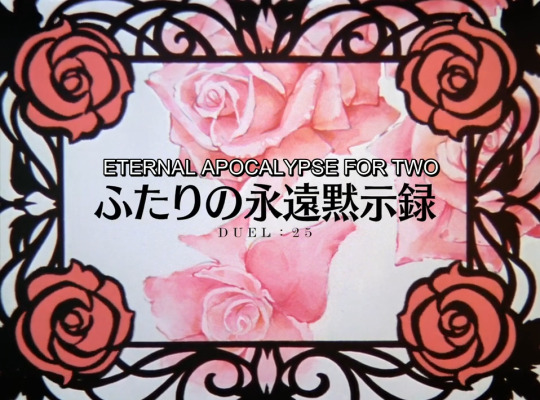
On top of this, Anya and I discussed alternatives that might sound more natural, at the expense of one of the two theme words (eternal or apocalypse). They suggested “endless apocalypse for two” or “eternal damnation for two”, which I really liked as titles. However, I think the Japanese is already slightly nonsensical and I think ensuring it comes across as such in English makes for a more accurate translation. One reason it comes across as nonsensical (or maybe not nonsensical but... using vocab exclusive to the show?) is that 永遠 is not a descriptor of 黙示録, since there’s no の particle present between them — the two words are combined into a compound word. Another reason is that 黙示録 doesn’t mean “Apocalypse” or “Revelation”, but specifically “The Book of Revelation”. It’s not an apocalypse that lasts forever but an eternal whatever-the-Book-of-Revelation-represents, I guess?
We also discussed who the “two” are that are being referred to in the title and agreed it’s likely referring to Saionji and Touga. Saionji is implied to be searching for an eternal or unchanging friendship, and this theme is reinforced by the shadow girl play. Interestingly I think the shadow girls are referring to Saionji (not Utena) when they say 勇者様 (lit. master hero; my translation: “brave sir knight”).
---
One big challenge of translation is preserving tone in cases of non-standard speech. For example, Wakaba speaks to Utena in an extremely casual schoolgirl-esque way. And because of this, many of the words she uses don’t carry specific meaning, but instead convey tone or emotion. For example:
Wakaba: もう超ラッキーって感じね!
Wakaba: It’s like, wow, you’re so lucky!
In this line, もう does not appear literally as in “already”, it appears as a tone indicator slash filler word, similar to the way “like” is used in English in casual feminine speech.
And in this line:

Wakaba: ウキウキラブラブーの展開なんて
Wakaba: I’d be all, “Ahhhh! He’s gorgeous!
The two consecutive 擬態語 (gitaigo — onomatopoeic words that describe actions or feelings that don’t make physical noise) are also a characteristic of casual speech, and very hard to translate directly. If you had to adhere closer to the source, you might translate it like so:
It’s a happy-happy-lovey-lovey development!
But let’s look at the true meaning here: ウキウキ is a happy or exciting vibe, and ラブラブ indicates an idyllic-romantic vibe. And to my ear, gitaigo feel closer to emotion than other words. It’s like, the emotions are too strong for her to be able to think of an actual word so all she can do is make the “sound” of her feelings. So to replicate that in English, I had her express her inner monologue directly!
---
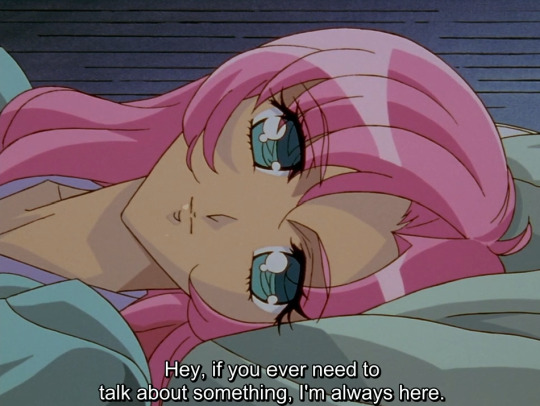
I really felt this scene in my soul when I watched it again this time around. After doing my initial translation, I decided to check the ohtori scripts out of a morbid curiosity, and I found what I expected — bad translations!
Utena: ね、もし君に何か困ったことがあったら、まず僕に話してよ。なんでも助け合おうよ。君とはそういう友達になりたいんだ。
Utena: Hey, if you ever need to talk about something, I’m always here. Let’s be there for each other. I want to be that kind of friend for you. (my translation)
I wrote this translation the way I would convey the same sentiment to a close friend. I think it reads pretty genuinely and naturally. Now compare and contrast with the stilted alternative:
Utena: Hey, if something ever troubles you, come talk to me about it first. No matter what, we'll help each other. That's the kind of friends I want us to be. (from ohtori.nu)

A big thanks as always to my incredible editor @dontbe-lasanya! Your insights into the title translation were invaluable.
Be sure to follow the blog to get updates as they release! For all episodes released so far, go here:
Rose divider taken from this post.
#revolutionary girl utena#rgu#utena#shoujo kakumei utena#sku#utena fansub#langblr#gender#translation#japanese vocab#japanese#official blog post
43 notes
·
View notes
Text
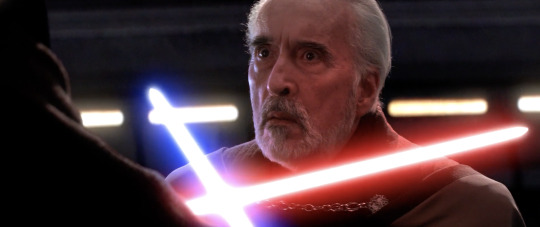
Between takes, [Christopher] Lee suggests that it is out of character for Dooku to ask Palpatine for help. Lucas agrees, and Jayne-Ann cuts the word 'help' from the script. ... "Not many people realize that dooku is Japanese for 'poison," Lee says. "Which is very appropriate, really, because he's lethal."
I think it's fascinating to see examples like this where Star Wars actors knew their characters more intimately than Lucas, because Lucas has admitted publicly that he doesn't prioritize the interior lives of characters over the way they appear on screen and how they participate in the plot. It's the actors who really live inside them, and give them a depth missing in the superficial script.
I'd honestly wondered before about why Dooku didn't out Sidious while he was on his knees about to die, like why he try to sway Anakin to his side, or even why didn't ask Sidious to intervene? But Lee was right, because Dooku was shaped by pride; it would be beneath him to beg. He'd also know the impossibility of quickly shifting the long-groomed Anakin to his side, and the mercilessness of the Sith.
So once Dooku finally realized his Master's plan involved dispensing with him in favor of a younger and more powerful apprentice, of course he wouldn't demean himself by begging, of course he wouldn't ask for help. He has a certain dignity even in extremis. It's a good trait in a villain, and also undoubtedly why Lucas cast Lee in the first place. He trusted Lee to embody this character, and Lee did it perfectly.
#count dooku#christopher lee#quote from rinzler's making of revenge of the sith#sw bts#sw#we love murder grandpa
128 notes
·
View notes
Text
AU where SJ transmigrated into blue lock when SY entered his body, and as a character who gained awareness when the system messed with him, he knows that he should make the most of this life for it to be completely different from the ending scripted for him ('he' would have lost in the first selection and never be mentioned again).
Honestly, SJ was kind of excited after transmigrating into blue lock. The system of SYs had given him the required info about his scripted future and the knowledge that a modern person would have, and the ability to speak Japanese before skedaddling to go tend to his host. Huh.
That aside, he had full confidence that he was the smartest person in the whole building, even if he had some knowledge gaps regarding the current levels of propriety in Japanese culture (There was a guy literally hanging off the back of another. That can't be normal, right? Oh my god he's sleeping now too.)
During the first selection test, he'd initially channelled his inner street child, mainly focussed on passing and striking to the best of his ability. He realised soon that with his Peak Master intellect, why would he only focus on himself when he could be manipulating the field to win, like how he used to manipulate battles (literally and figuratively) in his favour?
He'd gained the moniker of the Puppeteer, for his ability to read and manipulate the field to always come up top. After the second selection test he was ranked fourth (he couldnt rank higher bc in terms of ball manipulation etc he still wasnt really that strong). The reason why he worked so hard to rank in the top 6 is because he made a bet with Ego that if he could rank Ego would let him live in his own room. Usually Ego wouldnt have agreed, but having just seen him insult all the boys in his dorm to tears, he was intrigued enough to agree.
Did SJ miss the world of Pidw? Yeah, he definitely missed his sedentary life on the peak when he listened to the frequent arguments cropping up in a building of adolescent boys, and the fact that he himself was now back to being one of the said adolescent boys was awful, but the clean break from YQY and LBH was doing wonders for his mental health, with the added plus of escaping being turned into a human whatever that was.
He joined Bastard Munchen because he liked the attitude of logic and talent reigning king, and he def hates kaiser with the logic that a mountain cant have two kings, and he thinks that Ness would make a really good Ming Fan replacement or just a companion as a friend.
Here are his stats in the NEL for anyone interested hehe
Speed S (hes one of the fastest runners)
Offence S (lets be fr hes def so good at offence)
Shoot B
Dribble C (like i said his technical skills arent really good)
Pass B
Overall A? i think
#the only target audience for this is me i think#my two favourite hyperfixations...#let me tell u he'd get along sooo well with kaiser on the surface but hes secretly plotting bc he wants ness#ness is def the right hand man of his DREAMs#his ability is like midsagis!! ok im trying my best sj would have metavision tbh#hed hate kaiser like passive aggressively#blue lock#svsss#shen qingqiu#shen jiu#original shen qingqiu#michael kaiser#alexis ness#remi ending months of inactivity by introducing my new love for bllk? more likely than you think
25 notes
·
View notes
Text
Even more (wild) info on "The Hundred Line -Last Defense Academy-"
In a Famitsu interview, Kodaka has revealed many interesting things and general background details/info about The Hundred Line and its development.
Every playable character specializes in a "Special Subject" and a distinct weapon that are reflected in their clothing. This is the analog to the "Ultimate" student talents, essentially.
More clearly outlining the staff: The overall scenario is by Kodaka and Uchikoshi, who also shared script-writing duties. Komatsuzaki and Masafumi Takada return from Danganronpa and Master Detective Archives to once again handle character art/design and music, respectively. Nothing very surprising here.
The white ghost-like mascot is named "Sirei" in the original Japanese, and the tanukis seen in the 'Extreme x Despair' concept art are apparently the origin of the character.
He says that the team went into debt to create this game, ultimately taking out a loan to finance it.
"If the game doesn't sell, we can't pay off our debt. In that sense, this is a rare opportunity for players. You get to witness how the sales of a single title can affect the future of a company and its creators."
Apparently the game's lengthy development included a previous publishing deal falling through, which temporarily cancelled the game.
This is also a big reason why the original concept art doesn't much resemble the current product. In regards to the differences from the original concept art, Kodaka says, "The concept of the work has not been changed, but in order to make a proper restart, the character designs were renewed. Although these appearances changed, the setting was still inherited from the original work, so similar characters will appear."
MEANWHILE... per an article from RockPaperShotgun, The Hundred Line is reportedly promising "100 Extreme/Despair-Filled Endings." I can only guess that they're talking about variations in the ending depending on who falls in battle, kind of like Fire Emblem - maybe?
#last defense academy#the hundred line#the hundred line -last defense academy-#danganronpa#zero escape#master detective archives: rain code#rain code#master detective archives#mda#kazutaka kodaka#kotaro uchikoshi#tookyo games
84 notes
·
View notes
Text
Introduction and UtsuKare Translations Master Post
Some of you might recognize me as that Russian translator of Utsukushii Kare books from Wattpad. I decided to revive my tumblr to compile all the links and explanations here for those of you, My Beautiful Man fans, who can't wait for official English releases of the books.
I could never keep a blog, so for now here I'll just tell how it all came about, and you can find links to all my MBM translations at the end (feel free to just skip the wall of text).
So a couple of years ago I finally bowed down and decided to read Utsukushii Kare series in Japanese for language practice, even though I found the summary unappealing and I'm generally suspicious of overhyped media (as far as BL novels go, these books seemed to be The most hyped-up series in Japan). Much to my surprise, I loved it so much it was hard to move on. And while I waited for a chance to buy book 3 and Interlude, I gobbled up everything else related to the series that I could. The manga was only just starting, I didn't like dramaCDs (but I'm in the minority), and the drama somehow revived my love for watching Jdramas, even though I thought that this part of my fandom life has been over for years. When the second season started airing, I made a new friend in the Russian-speaking parts of the Internet who was even more obsessed with MBM than I am, and we fangirled to our hearts' content. At some point I promised her to translate the big sex scene from the end of book 3 as a gift for all the talks. I did, and since back then there was nothing for book 3 in any European language, as far as I know, I decided to post it online and give a link to English-speaking UtsuKare fans too. And since Wattpad doesn't allow copying text, and the browser translator feature from Google Translate was really inadequate, I also put up a link to the translation made with Deepl. As far as machine translators go, it is noticeably more comprehensible, and I didn't have the time (or skills to do the book justice, really) to translate it to English myself. Anyway, after this excerpt I thought I could manage one more important scene from book 3, then one more, and then I finally gave up and started translating it properly from the beginning. I also started correcting mistranslations in Deepl-versions that I kept doing for English readers, so some parts of the book are now much more readable than others. Now the third and the second book are done and I started to work on book 4, Mamanaranai Kare that was published in Japan at the end of October 2024. I also translated several stories from Interlude and plan to do at least one more, and maybe some others for some holidays.
So here are the links to everything I've translated from My Beautiful Man book series:
Book 3 "Nayamashii Kare" which continues the story past the movie (completed). The text is in Russian, but there are links to decent machine translations to English at the beginning of each part (I've also run through most of them and corrected the mistranslations). Or you can use the in-browser translation feature, but the results would be less readable.
Book 2 "Nikurashii Kare" which was technically turned into season 2 of the drama and the movie, but the script has deviated so much from the book, at times it's like a completely different story (completed). I don't make Deepl translations for this since the official English release finally came out in December.
Stories from the Interlude. A number of stand-alone stories from the collection of them called "Interlude". The book has a total of 15 stories, and I probably won't translate it in its entirety, but I've dones the ones that I personally liked. One of them had also been translated to English by Mauli before, but I didn't use her version when working on mine. The rest of the stories have never been translated by anyone else, as far as I know. These, too, have links to Deepl-versions at the beginning.
Book 4 "Mamanaranai Kare" continues where book 3 left off. Ongoing. Usually I can manage at least one update per month, sometimes more, and I plan to divide the whole book into 12 parts. Each part will have a link to an English version which is machine-translated but with all mistranslations corrected by me.
Disclaimer: my Japanese is not yet really on a level good enough to translate fiction, and there are bound to be mistranslations even if you read the original Russian versions. But I'm cross-checking myself on everything to try and keep those mistakes to minor things. I also know how to translate so I made sure that the text flows well, doesn't feel choppy and retains the same vibe that I get from reading the original.
66 notes
·
View notes
Text
Radiant Dawn Play Through 01
I beat Radiant Dawn (FIrst Playthrough) yesterday.
Notes: A-Rank with IkeSoren transferred from PoR. THis file was to set up a completely fresh NewGame+ with my own stat boosters from PoR. I will be playing NewGame+ on stream.
Radiant Dawn is kind of a mess, but I think it's even more of a mess on your first playthrough, which is probably the only playthrough people are ever going to do. I'm thankful for save states from GameFAQs, but I wanted to challenge myself this year.
(This is all based on the US Version of the game.)
Hard Mode is worthless and while in Japanese there was an extended script in Hard Mode, I would not wish that on anyone. I'm never doing hard mode in this game.
The English version lets you class change at level 20. Note, the Japanese version does not. You need master crowns for anyone you want to take to the end.
The English version has special weapons for the Dawn Brigade (that are canon in FEH which is incredibly funny) but the JP version does not. I can not imagine playing these games without the boosted weapons for The DB.
The second half of Radiant Dawn, without Pelleas, without a conclusion to Izuka, without the conversations about the Branded and the weight they have on the world is absolutely pale. I really think they should have just asked you if you wanted to replay from the point you have to kill Pelleas, rather than having to restart all over. There are no script differences before this point.
Not knowing the true identity of the Prince of Daien is wild. It's such an empty area. The biggest difference is that Almedha is depressed and listless for the rest of the game. We don't get a conclusion for her, she is just unhappy and her whole life was one mistake after the other.
If you don't deply the BK, you don't get Ike's memories back. It's weird.
Lehran dying is so funny to me because bitch deserves it but also I think it's WAY funnier for him to go "Zelgius is waiting..." and in new game+ Micaiah goes "PSYCHE!!!!" and doesn't let him die. Zelgius is STILL waiting, like, 700+ years later.
On that note, Yune being like "oh, Lehran I'm sorry. I understand having hatred for both the Laguz and Beorc. I was too callous" is so funny. Everyone has hatred in their heart in this game, but knowing to grow out of it is what matters.
I understand this game came out in 2005 and like, replaying the game was a thing, I guess? But in order to get Soren's special conversation, even if you transfered files, requiring TWO playthroughs because gay boys can't have anything is so funny.
I am glad there's still some paired endings, but the game really needed more conversations between characters.
Give Soren boss convos in Endgame.
Anyway, here's some screenshots from my run.
Ilyana about to fuck up PEEPAW!!

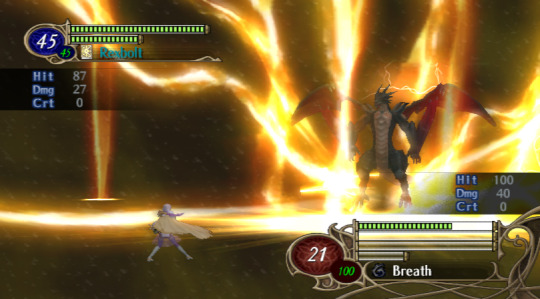
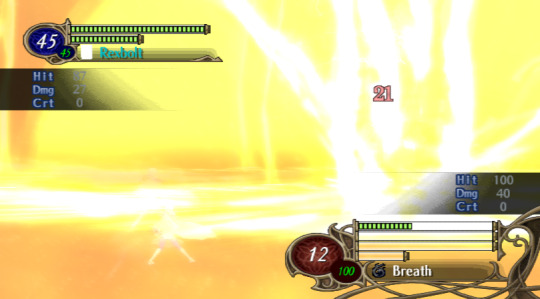
My top 3. I have NO idea how Nephenee became queen of the battlefield, but you go girl.
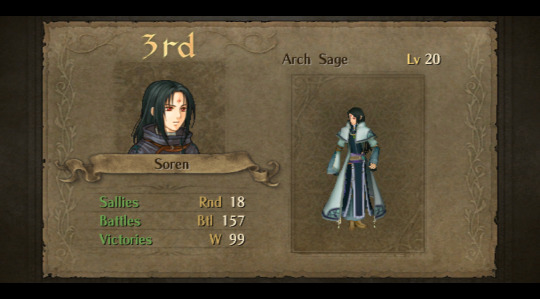
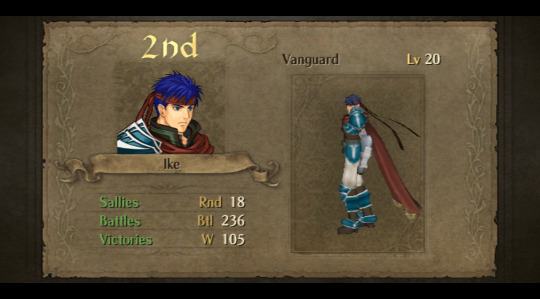
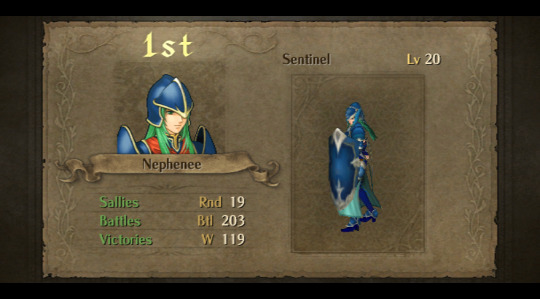
If you don't save Lehran/newgame+, Ike and Soren swap places. (I do not know if Ranulf takes Soren's spot here, or if his portrait stays near Skrimirs if you A-Rank them.)
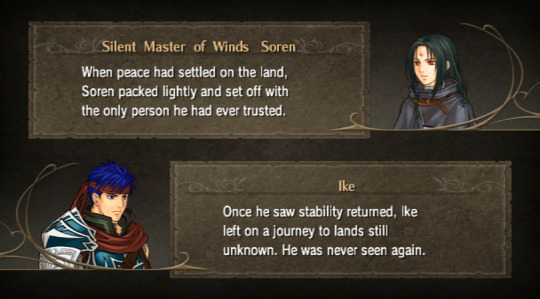
Me being absolutely mad I can't talk to my little guy:

Ike about to fuck up a bird.
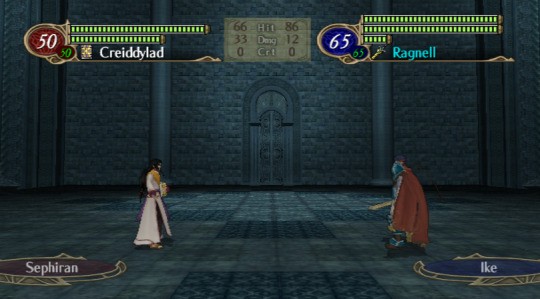
Also, interesting. Is Lehran the first laguz to use weapons?
And finally, here are Ike and Soren's capped out stats.


That's the power of love, baby.
28 notes
·
View notes
Text
ZOMG TODAY I LEARNED THERE'S A JAPANESE STAGE PLAY ADAPTATION OF MDZS. WITH A LIVE STREAM. FOR MY BIRTHDAY ???!!!
from https://l-tike.zaiko.io/e/mdzsstage (full machine translation & original text from website included below the cut)
streaming event:
sun 4/6 11:30am JST => sat 4/5 10:30pm EDT
sun 4/6 5pm JST => sun 4/6 4am EDT
TICKET PRICES (as of 2025-02-21)
sunday. 2025-04-06. 1130 JST -> JP¥3,687 (all purchase taxes& fees included) => USD $24.70
sunday. 2025-04-06. 1700 JST -> JP ¥4,753 (all purchase taxes& fees included) => USD $31.84
*Please note that you will only be able to watch the streamed footage at the same time as the performance, and will not be able to watch it after the performance has ended.
----------
what does ticket purchase site look like? (iphone chrome browser btw)

----------
btw. i live in florida, usa. so that's the currency and time zone i converted to! resources used to make this post: google translate & currency conversion and world time zones converter (https://www.timeanddate.com/worldclock/converter.html)
----------
Event date
04/06 (Sun) 11:30 – LATE JST
Event type
Stage/Show
Stage play "The Master of Diabolism" Encounter Edition April 6th (Sunday) Final Day Performance (Full View) Kyoto Theater
Streaming-Stream date
04/06 (Sun) 11:30 JST
Stage play "The Master of Diabolism" Encounter Edition April 6th (Sunday) Final Night Performance (Switching) Kyoto Theater
Streaming-Stream date
04/06 (Sun) 17:00 JST
[Notes]
〇The stage play "The Founder of Diabolism" Encounter Edition will only be streamed live. There will be no catch-up or archived streaming.
*Please note that you can only watch the streaming video at the same time as the performance, and you will not be able to watch it after the performance has ended.
〇The stage play "The Founder of Diabolism" Encounter Edition will not be released on Blu-ray/DVD.
[Official stage website]
https://stage.mdzs.jp/
[Introduction]
The global mega-hit fantasy novel "The Master of Diabolism" has finally been adapted for the stage!
The original work is the BL fantasy novel "The Master of Diabolism" by author Mo Xiang Tong Xiu, which was serialized on a Chinese online novel site from October 2015 to March 2016.
The story is set in a fictional ancient China where magicians exterminate demons and evil spirits. The detailed and epic story depicting the turbulent fate of two people bound by a strong bond and the charming characters have been well received, and the novel has been translated and published overseas. It has been developed
into a variety of media mixes such as radio dramas, manga, anime, and live-action dramas, and the video works have been viewed more than 15 billion times in total. It has caused a social phenomenon in Asian countries, and its popularity has not stopped, and it is now explosively popular all over the world.
In Japan, the live-action drama version of "The Untamed" (subtitled version) was broadcast in March 2020, the anime "The Master of Diabolism" (subtitled and dubbed versions) was broadcast, the radio drama was distributed, the original novel was translated and published, and the Japanese version of the manga will be serialized in 2024, and it has been a hot topic of conversation.
Now, it has finally been decided that the story will be adapted into a stage play, a world first.
The subtitle of this first stage production of "The Master of Diabolism" is "Encounter Edition," and it depicts a profound world view and complex human drama.
In addition, a talented cast and staff have come together to mark a new chapter in the media mix development of "The Founder of Diabolism." The script and direction are by Ise Naohiro, who is active in a wide range of fields, mainly in the theater. The music is by Sakabe Tsuyoshi, who has worked in a wide range of genres, including theater, television, and film. In addition, Gearous, who has worked on many illustrations for "The Founder of Diabolism" in the past, has participated as the main illustrator to create new visuals for the stage. The character designs will be produced in collaboration with the production committee for the stage production of "The Founder of Diabolism."
The lead character, Wei Wu-Xian, will be played by Shunya Kaneko, who made his debut as a child actor in "Big! Tensai Terebi-kun" and has since appeared in such films as "Ultraman Trigger: New Generation Tiga" and "Perfect Proposal", making this his stage debut. The role of Lan Wangji will be played by Hirose Tomoki (Touken Ranbu the Movie, Demon Slayer: Kimetsu no Yaiba the Movie: Kimetsu no Yaiba Part 2 Kizuna, etc.), who is active in a variety of fields including stage and film. The cast also includes a range of actors, from fresh faces to experienced and talented actors, such as Wada Takuma (stage show Touken Ranbu, MANKAI STAGE A3!, etc.), Komatsu Junya (Kamen Rider Revise, stage show Romeo & Juliet, etc.), Tamura Shogo (Dancing☆Star PreCure The Stage, Touken Ranbu the Musical, etc.), and Murata Mitsuru (Attack on Titan -The Musical-, HUNTER×HUNTER THE STAGE 2, etc.).
This production is brought to you by Sony Music Solutions Inc., which has been developing the TV drama, anime, and manga of "The Founder of Diabolism" in Japan, and Marvelous Inc., which has produced numerous stage productions.
Look forward to the stage production of "The Founder of Diabolism," which is full of charms that can only be experienced in live entertainment, such as the powerful sword fights unfolding before your eyes.
[Story]
The world is an age of tyranny by the Qishan Wen clan, and the people suffer.
The Gusu Lan clan, Yunmeng Jiang clan, Lanling Jin clan, Qinghe Nie clan and other immortal ascetics join forces and succeed in defeating the Wen clan. Among them, Wei Wuxian, the Yiling Patriarch, made a great contribution, but he was feared by the people because he was involved in the powerful demon arts, and eventually he was ruined. Then, thirteen years later,
Wei Wuxian, who was revived by magic, encounters a strange incident and is reunited with his fateful partner, Lan Wangji of the Gusu Lan clan. As he investigates the incident, he approaches the truth of what happened thirteen years ago - the story of the turbulent destiny of these two people begins.
[Staff]
Original work: "The Master of Diabolism" by Mo Xiang Tong Shu
Script and direction: Naohiro Ise Music: Tsuyoshi Sakabe Main illustrator: Gearous
[Cast]
Wei Wuxian (played by Junya Kaneko) Lan Wangji (played by Tomoki Hirose)
Jiang Cheng (played by Takuma Wada) Lan Xichen (played by Junya Komatsu)
Jin Ling (Jin Lin): Shogo Tamura
Lan Si-Zhui (played by Ando Yumeka) Lan Jingyi (played by Tsuchiya Naotake)
Nie Huaisang (voiced by Yasui Kazuma) Jin Zi Xuan (voiced by Takeshi Naoki)
Lan Qi Ren (voiced by Mitsuru Murata)
ⒸStage "The Grandmaster of Demonic Cultivation" Production Committee
Adapted from the novel of the same name by Mo Xiang Tong Xiu, a contracted author of Jinjiang Literature City
----------
Event date
04/06 (Sun) 11:30 – LATE JST
Event type
Stage/Show
舞台『魔道祖師』邂逅編 4月6日(日)千秋楽 昼公演(全景) 京都劇場
Streaming
Stream date
04/06 (Sun) 11:30JST
舞台『魔道祖師』邂逅編 4月6日(日)千秋楽 夜公演(スイッチング) 京都劇場
Streaming
Stream date
04/06 (Sun) 17:00JST
【注意事項】
〇舞台『魔道祖師』邂逅編の配信はライブ配信のみです。見逃し配信・アーカイブ配信はございません。
※公演と同じタイミングでしか配信映像をご視聴いただけず、公演終了後にはご視聴できませんのでご注意ください
〇舞台『魔道祖師』邂逅編はBlu-ray/DVDの発売はございません。
【舞台公式サイト】
https://stage.mdzs.jp/
【Introduction】
世界的メガヒットファンタジー小説『魔道祖師』、ついに舞台化決定!
原作は、作家・墨香銅臭(モーシャントンシウ)により、中国のオンライン小説サイトにて2015年10月から2016年3月にかけて連載されたBLファンタジー小説『魔道祖師』。
物語の舞台は、法術を使う者が妖魔や邪鬼を退治する架空の古代中国。強い絆で結ばれた2人の激動の運命を描いた緻密で壮大なストーリーと魅力的なキャラクターが反響を呼び、海外でも小説が翻訳、出版された。
ラジオドラマ、漫画、アニメ、実写ドラマなど様々なメディアミックスを展開し、映像作品はシリーズ累計150億回再生超。アジア各国で社会現象を巻き起こし、その人気はとどまることを知らず今では世界中で爆発的な人気を誇る。
日本では、2020年3月に実写ドラマ版「陳情令」(字幕版)が放送され、アニメ「魔道祖師」(字幕版・吹替版)放送、ラジオドラマ配信、原作小説和訳出版、さらに2024年には日本版漫画の連載開始と、たびたび大きな話題となっている。
そしてこのたび、ついに世界初のコンテンツとなる舞台化が決定。
舞台『魔道祖師』の第一弾となる本作の副題には“邂逅編(かいこうへん)”と銘打ち、重厚な世界観と複雑な人間ドラマを描き出す。
また、『魔道祖師』のメディアミックス展開に新たな1ページを刻むにあたり、実力派スタッフ・キャストが集結。脚本・演出は、舞台を中心にマルチに活動する伊勢直弘。音楽は、舞台やテレビ、映画と幅広いジャンルを手掛ける坂部 剛が務める。さらに、舞台用にビジュアルを新調するため、これまでにも『魔道祖師』のイラストを数多く手掛けているGearousがメインイラストレーターとして参加。舞台『魔道祖師』製作委員会と共同で、キャラクターデザインの制作を手掛ける。
主人公・魏無羨(ウェイ・ウーシエン)を演じるのは、『大!天才てれびくん』で子役デビュー後、『ウルトラマントリガー NEW GENERATION TIGA 』、『パーフェクトプロポーズ』などの映像出演を重ね、今回が初舞台となる金子隼也。藍忘機(ラン・ワンジー)役は、舞台や映画など様々な場で活躍する廣瀬智紀(『映画刀剣乱舞』、舞台「鬼滅の刃」其ノ弐 絆 等)がダブル主演として務めるほか、和田琢磨(舞台『刀剣乱舞』、MANKAI STAGE『A3!』等)、小松準弥(「仮面ライダーリバイス」、舞台「ロミオ&ジュリエット」等)、田村升吾(『Dancing☆Star プリキュア』The Stage、ミュージカル『刀剣乱舞』等)、村田 充(「進撃の巨人」-The Musical-、 『HUNTER×HUNTER』THE STAGE 2 等)など俳優陣はフレッシュな顔ぶれから経験豊富な実力派までが勢揃い。
これまで日本で『魔道祖師』のドラマ・アニメ・漫画を展開している株式会社ソニー・ミュージックソリューションズと、数々の舞台作品を手掛ける株式会社マーベラスが共同でお届けする本作。
目の前で繰り広げられる迫力満点の殺陣など、ライブエンタテインメントでしか体感できない魅力が詰まった舞台『魔道祖師』をお楽しみに。
【Story】
世は岐山温(きざんウェン)氏が暴虐の限りを尽くし、民が苦しみにあえぐ時代。
姑蘇藍(こそラン)氏・雲夢江(うんむジャン)氏・蘭陵金(らんりょうジン)氏・清河聶(せいがニエ)氏をはじめとする仙門の修行者らは力をあわせ、温氏の討伐に成功する。
なかでも夷陵老祖(いりょうろうそ)である魏無羨(ウェイ・ウーシエン)は貢献を果たしたが、強大な力を持つ鬼道に手を染めたがゆえに人々に恐れられ、やがて身の破滅を招いてしまう。
そして十三年後。
呪術によって蘇った魏無羨は怪事件に出くわし、宿命の相手、姑蘇藍氏の藍忘機(ラン・ワンジー)と再会する。
事件を追ううちに十三年前の真相に迫ることとなり―――
2人の激動の運命をめぐる物語が始まる。
【Staff】
原作:『魔道祖師』墨香銅臭
脚本・演出:伊勢直弘 音楽:坂部 剛 メインイラストレーター:Gearous
【Cast】
魏無羨(ウェイ・ウーシエン) 役:金子隼也 藍忘機(ラン・ワンジー) 役:廣瀬智紀
江澄(ジャン・チョン) 役:和田琢磨 藍曦臣(ラン・シーチェン) 役:小松準弥
金凌 役(ジン・リン):田村升吾
藍思追(ラン・スージュイ) 役:安藤夢叶 藍景儀(ラン・ジンイー) 役:土屋直武
聶懐桑(ニエ・ホワイサン) 役:安井一真 金子軒(ジン・ズーシュエン) 役:武子直輝
藍啓仁(ラン・チーレン) 役:村田 充
ほか
Ⓒ舞台『魔道祖師』製作委員会
改編自晋江文学城簽約作者墨香銅臭同名小説
#mdzs japanese stage play#the week before my bday???!!!#LIVE STREAMING INTERNATIONALLY???!!!#mdzs#wangxian#machine translation#original japanese included for those interested#long post#previously pinned
30 notes
·
View notes
Note
hey! i really enjoy your analysis of aang and zuko's relationship, and i was just wondering if you have any thoughts on this:
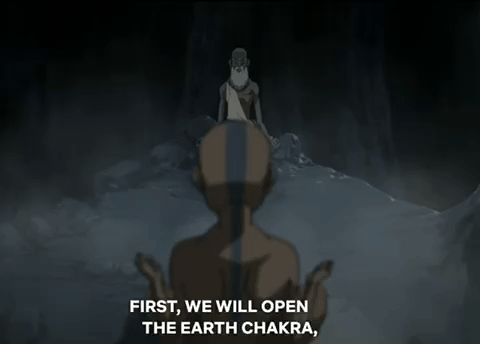
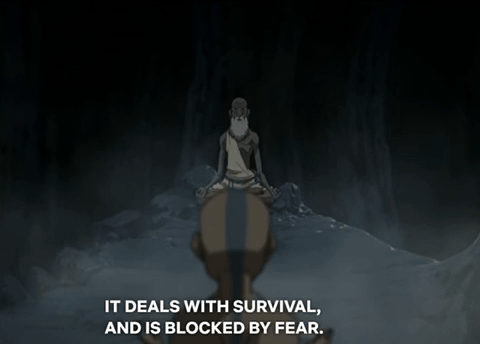
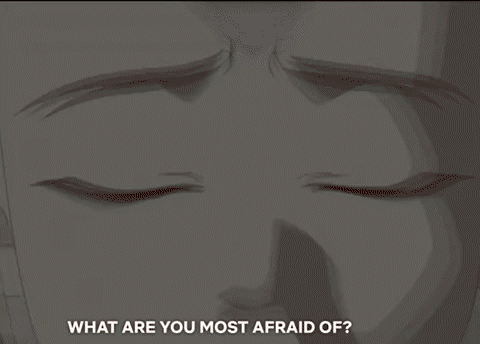
when aang considers what he's afraid of the most, he doesn't just see zuko - he sees the blue spirit. why do you think his fear is linked to that mask? zuko was the most amicable towards him when he put that mask on, and was hostile every other time.
Ooooh!! This is such a rich and meaty question!! And it's something I've wondered about but never dove into before.
I guess there are a couple of questions we need to explore. One, do we want to begin to analyze this from Aang's perspective or the series' themes, which, when put together, should offer us the fullest idea of what the intent might be? If we begin with Aang's perspective, then the next question we need to next ask what is Aang's view of Zuko and/or the Blue Spirit at this point in the narrative? My worry about beginning at that intimate level is that we might miss possible connections that a thematic understanding might facilitate and may, like many fandom analyses, leave it at a character level when, in fact, the characters exist to serve larger philosophical purposes, especially in a show like ATLA.
So, we'll return to those questions about Aang after we visit some questions about the broader themes here. We know for a fact that the team did a lot of research into Eastern philosophies that they had to then pack down into 24 minute episodes, preserving a surprising amount of complexity not in the words but in the actions and visuals. The 2 part Crossroads of Destiny episode is probably the most evocative of this practice. The four-way fight scene is celebrated for the way it masterfully shows character development through fight choreography. Then, Aang's crystal chamber he forms to master the Avatar State is a direct reference to a statement about pre-enlightenment in one of the foundational texts about Japanese Zen for American Buddhists, "The Three Pillars of Zen." The rapid explanations of the seven chakras with Guru Pathik might seem like a a skimming of Tantric beliefs based on the brief statements and processing, but it's another prime example the way ATLA suffuses meaning beyond the script.
What more can be said about the Earth (also called the Root or Muladhara) Chakra, then, that the show might reflect without stating it explicitly. Guru Pathik explains that the Earth Chakra "deals with survival." Is there any subject more prescient than that for our protagonist, the single survivor of an otherwise all-encompassing genocide? Other accounts of this chakra that I can find explain that it's at this chakra that one can observe that their base needs are being met--enough food, enough water, etc. There seems to be a subtle witnessing to the effects of PTSD here then. With this chakra untouched, unopened, and out of balance, Aang within his mind has been living in a state of emergency without knowing it, believing himself at a core level beyond his consciousness to still be under immediate threat even in moments of peace like his meditations throughout the opening of his chakras. "Your vision is not real," Guru Pathik points out, not to say that no danger exists for him in the world but to illuminate the immediate reality surrounding his person.
The memories and visions that flash during the sequence hint at how fear conceals deeper realities and thus possibilities. I'll start with the clip of Katara sinking away from the first episode of Book 2, "The Avatar State." The Earth Kingdom General performed this cruelty after many other attempts to force Aang into suffering to gain the Avatar State. Believing he lost another person he loved, the state was triggered despite the actuality that Katara was unharmed. The fear of her loss overwhelmed Aang, and even her safe return could not assuage his traumatic response. The Blue Spirit incident forms a striking parallel to this event, in that case. Aang felt himself helpless and in danger only to discover the opposite: the seemingly malevolent force freed him from danger. Further, that Blue Spirit Mask concealed Zuko who, by the end of the series, will be revealed (to himself and) Aang as an ally and a friend. The shadowy image of Ozai, then, connected with these two fear-inducing semblances, can be seen then as perhaps the ultimate foreshadowing of Aang's ultimate success in pacifying Ozai. Put in the context of this chakra and the other two visions, it frames the Firelord as a facade meant to induce terror and distance, when in reality, life and humanity still lay behind the horrifying megalomania.
Concerning the Blue Spirit element specifically in the series, I want to explore one more factor within the series before getting back to Aang's character relationship in this moment. Blue has a running symbolic theme within the series that seems especially relevant here since it played a huge role in a highly symbolic part of the directly previous episode, "The Earth King." As Zuko rides out his psychogenic fever induced by releasing Aang's bison and abandoning his Blue Spirit mask, he is confronted in his dreams by a blue dragon voiced by Azula and a red dragon voiced by Iroh. I felt really confused by these two would-be shoulder angels for the longest time (literally until I was sorting my thoughts out to write this) because Azula's blue dragon is the one who entreats Zuko to rest, which even in Grey Delisle/Azula's clearly threatening tone--she even ends the temptation by saying "sleep just like mother!"--seemed to be what Zuko needed to do as opposed to the red dragon's exhortations to get out. I could see how sleeping might also refer to accepting his upbringing without thought, but why blue? The layers upon layers of possible meaning overwhelmed me.
I posit that blue in the series, especially when put in relationship to red/orange, as it is in the dream sequence, the dynamic between the water tribe and the fire nation, the fire of zuko and azula (especially the final agni kai), and the energy-bending of Aang over Ozai in the finale, ought to be read as Yin (making red/orange yang). Yin is passive, retractive, and receptive, which makes the invitation to rest by a blue dragon make perfect sense. Yin is also feminine in nature, hence the association with both Azula (whose blue fire and lightning becomes especially interesting to explore under this understanding) and Zuko's mother in the dualistic dragon dream. If you know anything about yin and yang, you know that it's key tenet is ever-changing coordination of yin and yang within one entity and with relationships between entities rather than the privileging of one above another. The two dragons in Zuko's dream, while seemingly in opposition to one another, are actually seeking, like the bumper stickers say, "coexistence" of their dispositions.
Now, back to Aang's vision of fear over the Blue Spirit. The red that overlays everything is specifically a reference to the Earth Chakra, which is symbolized by the color red. But the fact that he has one fear of Katara, the pinnacle of blueness/yin in the series, dying, and another fear of the Blue Spirit, a de-flamed (read: emasculated) Zuko attacking him that are then overlayed by this Earth Chakra red, a color otherwise used to portray yang (masculinity, activeness, expansion, and repulsion) and the fire nation in the series, suggests that his fears are specifically about within holding onto yin nature (symbolized by his grasping for a disappearing Katara) without being entirely overwhelmed by it (in the image of the fear he felt as the Blue Spirit approached his imprisoned body). And all those fears are intensified when living in such a patriarchal, or yang-skewed age and society, which gets depicted through both the final image of Ozai, the ultimate patriarch within this world, and the red coloring.
I promised I would get back to the characters, and after that hopefully illuminating thematic expansion, we can hopefully get at the core of what's going on here for Aang personally and what it might mean for him to be picturing Zuko with the Blue Spirit mask as a fear. I want to put this moment into context with Aang and Zuko's relationship at this specific moment. Aang hasn't seen Zuko since he watched him cry over his uncle in the ghost town after Azula struck him with lightning as a diversion. That was ten episodes prior (and more than 6 months time if you were watching the show in real time as it premiered; May 26th-Dec. 1st). The next time Aang sees Zuko, two episodes later, they are glowering across a crystal prison cell at one another with antipathy as they're embraced (a gesture I can only remember from the fantastic black romance film Love & Basketball, and in a gay context that is clearly referencing that moment in L&B, in the Norwegian teen romance series Skam). Right before this scene, Aang readily agrees to co-rescue Zuko and Katara with Uncle Iroh despite Sokka's protestations. Nothing seems amiss with Aang, no obvious belligerence toward Zuko until he sees him. Zuko has barely seen the airbender this whole season, and the one moment they encountered one another, Zuko was attacking Aang's attacker rather than him. Why is Aang expressing anger toward Zuko in the crystal chamber then? It's a rare expression from Aang even when we look at their more antagonistic interactions from the first season.
Here's where this vision of the blue spirit Aang envisions as he opens his earth chakra might enliven his characterization and his relationship to Zuko. We get two pieces here. His attachment to Katara and the queer implications of his partnership with the Blue Spirit/Zuko. And they are inseparable.
I don't feel that I need to especially dive into the attachment to Katara since it's been a pretty big component of discourse within the fandom, both in general analysis and more specifically relating to the (literally historic) shipping wars between zutara and kataang that emerged after the series came out originally. What I'll say here is that the first vision that Aang has as he addresses his root chakra points to his fear of losing her and what she represents pretty explicitly and, as I suggested earlier, also provides its antidote in the realization that accepting/surrendering the fear of impermanence reveals its simultaneous illusion. Katara wasn't actually harmed and wasn't truly lost when the general subsumed her into the ground. Aang has to let go of her as a permanent fixture that he'll always be able to see and know entirely (not, as many have interpreted it, let go of loving her). He'll also have to let go of saving her and the world of so many others she represents, which is as much a pressure and role Katara and others put on him as Aang yolks himself to.
Part of this acknowledgement of Katara's impermanence as a living being and a romantic possibility is addressing the others in her life who pose both danger and attraction for her. Zuko embodies both of these things simultaneously. The aggressive stare Aang launches at Zuko in "The Crossroads of Destiny" can be understood through this lens. The Eve Sedgwick's concept of the triangulation of male homosocial desire between romantic rivals was one of the foundational ideas of queer theory. It's so well-established as to be a meme among the tumblr crowd. The show even references the history of these literary homosocial tropes in "The Avatar and the Firelord" as Sozin and Roku's tight-knit youthful friendship is slowly rent apart at the event of Roku's heterosexual marriage, which thus begins the imperialism of the Fire nation.
Except that Roku and Sozin aren't romantic rivals. And Zuko's obsession with Aang begins sans Katara. And, as you pointed out, if the romantic threat is Zuko, it ought to be Zuko in the Earth Chakra vision instead of the Blue Spirit? Well, those all exist because ATLA is not a tragedy for homosocial relationships, and it's hard for me to explain how groundbreaking that was.
You see, the show theorizes homosociality differently. If Aang is required to let go of Katara, he has no pivot point, no object (because women shouldn't be objects for male fodder!) to connect with and compete with a rival male, so he has to look directly at the desire of another male for him and, therefore, face the fears that he might have similar desires. I said above that the Blue Spirit is an entirely de-flamed Zuko, which I then paralleled to emasculation. One could even go farther to call it a kind of symbolic castration (Firelord Ozai losing his firebending at the end of the series certainly demands this kind of reading). These aspects ignite fears about lacking masculinity which then cause reactions, which make men avoid accepting any thoughts and behaviors associated with vulnerability and homosexuality invoked within themselves or by others.
I think Aang, in his way, is confronting these fears but not from the angle of someone raised within a homophobic or misogynistic culture. His openness to Zuko and the potential of connection to him is ripe from the first time they meet--"you're just a teenager" connects them without any intermediary. He comes to understand the rigidness of the environment he's in, though. He feels like he's being forced to choose between a yang/masculine role he plays with Katara, who at this point in the series though growing out of it and certainly not a fault of her own making still sees him as her savior and depends on him to save her and the world through metaphysical mastery and the repulsion of evil, and yin/feminine role he plays with Zuko, who finds Aang in and forces him into positions of elusion, surrender, and passivity, while requiring his compassion and forgiveness. When the Blue Spirit comes swinging his swords (read that with all the innuendos you want lol) at a shackled Aang, it's the ultimate expression of Aang's potential for submissiveness because, not only is he entirely helpless but the one who could harm or save him in that scenario is another who is not participating in the expected power of fire/yang/masculinity.
I think everything in the show says this is attractive to Aang--that he remains with Zuko immediately after their escape from the fort, that he reflects on the Blue Spirit as he opens his chakras, that a reference to the conversation that followed their escape that Zuko makes halts him in his tracks when Zuko asks to join the team. Zuko's Blue Spirit persona means a lot to Aang, a scary amount, and my point is that it's this fear of the meaningfulness of their encounter as two men who are not the masculine paragons they are supposed to be which Aang faces as he opens his chakra. As much as he wants Katara, he wants Zuko. He fears he'll lose Katara and he fears he'll lose his life to Zuko. These are the dichotomies he's tackling as he processes the Earth chakra.
Aang eventually opens the chakra, but that's only to say he acknowledges and surrenders his fears to a destiny and understanding beyond his control, not that he necessarily learns how to address and solve all the conundrums contained therein. We know he chooses his attachment to Katara at the end of the episode to obtain power over the Avatar state but perhaps we could've been clued into this choice by noticing he has not chosen Zuko with that initial glare Aang gives him. Aang hasn't found a way in his chakras or his heart to hold both Katara and Zuko at once, so he chooses Katara and expresses a newfound jealousy and rivalry toward Zuko (not that Zuko's at his best behavior at this point, but it's Aang who initiates the exchange).
By the end of this season, Zuko abandons the Blue Spirit mask and Aang loses his life for prioritizing Katara and a yang-centric mastery of the Avatar state. The next season involves all three of the protagonists finding more internal balance between yin and yang for themselves and accepting mutually reciprocal feelings for one another that allow them to escape the kinds of patriarchal tropes that have dominated Anglo- literature for centuries. The ability of this brief sequence to highlight so many of the series' central revolutionary themes speaks to the depth of the show and the way it invites the audience to think about rich subtext rather than pedantically hammer us with morals will just continue to be the gift that keeps giving from this show.
Thanks so much for asking! Didn't know how much I missed doing a deep dive into this kind of stuff.
97 notes
·
View notes
Text
Kamen Rider Gavv Episode 36 Production Blog
i know this person who said shoma would be a trans allegory before gavv even started. they were also the person who donated as “kamen rider” on saltydkdan’s first ribbit stream which i watched live and i didn’t find out it was them until months later
TOKU TRANSLATION MASTERPOST HERE
translated from this website
Looking at the Next Episode
The Master and Over forms have arrived. It was interesting action that you couldn’t take your eyes off of! The duo of Director Sugihara and Action Director Fujita is the strongest of them all. It was a treasure trove of ideas.
During a meeting to discuss power-up forms, it came up that a gummy final form was alright, but felt unsatisfying… So we did a two-form power-up, similar to Kamen Rider Agito’s Burning and Shining forms, or Kamen Rider Geiz Revive Fury and Typhoon. Then, Bandai came up with the idea of a jar that gets flipped upside down. The face that appears is like a trompe l’œil optical illusion. The material is also particularly jelly-like. For those who like holding the Gochipod, please enjoy how it feels.
To be honest, these two forms look completely different, but they use the same undersuit, components, and shape. They contain many clever design ideas. It’s interesting when you compare them. Please look forward to their use from here on out. We’re also grateful to the Toei Tokusatsu Fan Club members who cooperated with us over long filming sessions for episode 36. It took on that look (of being super-crowded) after editing. The things filmed around the venue are connected in many places.
And then next week will be… a Japanese confectionery rush. A request to restore a Japanese confectionery shop. A premonition of a Gochizo’s birth. And someone that Hanto comes across… Someone he couldn’t have forgotten even for a moment. It will be delivered by Nobuhiro Mouri as its writer, and Satoshi Morota as its director. After the power-up comes Hanto’s destined opponent. In addition, Vram’s broken belt and Jiip’s slow-moving, magma-like thoughts will also be of interest. “Gavv’s” story won’t slow down. Please keep watching next week!
(Written by Naomi Takebe)
The Episode in Short
Thank you for watching episode 36! Continuing from the last episode, it’s directed by Teruaki Sugihara! Director Sugihara was last responsible for Valen’s power-up arc in episodes 27 and 28, but this time, he was in charge of an episode where a new Gavv form appears.
Last time, Director Sugihara poured his heart and soul into filming the final battle between Hanto and Suga, but this time, he captured the protagonist Shoma’s conflict and determination.
Sugihara has watched over the cast since the pilot episode. Let’s look back at episode 36, which he put all of his energy into creating!


“U.M.A.”, Attacked
“U.M.A. (Ultimate Music Achievers)”, the talk of the town, who had their music video released exclusively on TTFC last episode. The lovely folks at the art department made plenty of fan merch (props) for them. The fans saying “Only horses are winners”, “Neigh with us”, and et cetera certainly make one curious about the full story of this band (Laugh).
Rittsun is such a big fan of them that she brings a horse mask. 🐴 By the way, the orange outfit that Rittsun was wearing is the color of carrots, a horse’s staple food (Laugh).


Since this is a very important episode containing Gavv’s power-up and a showdown with Lango, the script for this Sugihara arc was also created with an aim for visual richness.
Last episode, there were the settings of an “airplane interior” and “airport”, but this time, it’s a “U.M.A.” concert venue!
The concert’s audience was played by TTFC members! We asked them to bring homemade fan merch and glow sticks. Thank you to everybody who prepared their own support merchandise that show their personality! I’m sure there were many people baffled by the part in the outline sent to the members who won the raffle that said to “please come with carrot-themed props” (Laugh).


The filming session was time-consuming and started early in the morning, but we thank everyone for their support!
They were also greeted by Director Sugihara and cast members like Chinen.

A lot was written about U.M.A. in the last episode’s “The Episode in Short” section as well, but there’s one more behind-the-scenes story.
Since not many people are able to perform with musical instruments while wearing horse masks, it was very difficult to cast the members of “U.M.A.”
The person who then came to help us was [Fumiki] Yoshikawa, the assistant producer for the show airing alongside Gavv at that time, “Bakuage Sentai Boonboomger”. AP Yoshikawa’s childhood friend Hayato Sagawa accepted the role of the dapple-gray Shige (drummer), and then invited his neighborhood bandmates to make up the rest of “U.M.A.”!
You should definitely check out the music of Hayato Sagawa— along with Crab Kani Club, who provided the song used in this episode!

Ruler of Snacks, Master Gavv
In episode 36, Shoma’s actor Hidekazu Chinen had plenty of scenes to show off in, but even among those, his one-on-one scene with Lango’s actor Takashi Tsukamoto is an especially important one.
It’s a scene where Shoma shows his determination, with all of the experiences he’s had up to now as encouragement. Chinen showed a look brimming with the confidence he’s developed, one which only Director Sugihara, who has seen the cast grow since episode 1, could have filmed.
Audio commentary with Chinen, Tsukamoto, and Director Sugihara is currently available on TTFC, so please give that a listen!


The Gochipod has the words “OVER” and “MASTER” engraved into it. As the item that brings out the power of the strongest Gavv, the meeting on the Gochipod’s toy design reached the pinnacle of difficulty. During that, Bandai came up with the idea of two-way use that alternates between the powerful “Over Mode” and the smart “Master Mode”, which is innovative for both play and design.
When the Gochipod opens, an “up-and-down image” design appears, making it an excellent item that can be enjoyed in two ways at once!


“Kamen Rider Gavv Master Mode” was revealed for the first time in this episode. Contrasting against the impactful “Over Mode”, it has an elegant design that’s reminiscent of the PoppinGummy form, bringing it full circle. It truly is a fitting name to crown the “strongest Gavv” with!

From Action Director Fujita’s idea, Master Mode is a form with super-speed in order to make up for the weak point of Over Mode, which specializes in the power of finishing opponents in a single blow. Lango is crushed with this blink-of-an-eye speed in episode 36 as well.
Furthermore, it is also powerful to make the best of each mode’s strong points while alternating between “Master” and “Over” during the battle! It was truly exhilarating to see the fight play out while switching between the two forms!
“Gavv” has been a Granute-human hybrid from the beginning, and the forward-bent posture which incorporates a “wild flavor” into the action has become characteristic of it, but Director Sugihara had the idea to have him bend even further down, creating a striking pose that feels even more wild.

Furthermore, as the name “Master” suggests, the form has the power to rule over all snacks, and so it also has the ability to produce previously seen items like the “Chocodan Gun” and the “Zakuzaku ChipSlasher”!
The weapons’ abilities are well-balanced between short- and long-distance range. It’s an all-purpose style of fighting while summoning various strengths! Truly a “Master”!

The free-moving camerawork special to the duo of Director Sugihara and Action Director Fujita, and the action which makes maximum use of the complicated location sites, were a series of surprises.
There were also scenes that were shown with Kamen Riders filmed on a green-screen and backgrounds filmed with a 360 camera and then edited in, but there were also many shots that were large-scale even for the cinematographers, filming Gavv while suspended in midair!
I definitely hope that you watch this action as many times as you want by streaming it.


The finishing Rider Kick puts Lango to a stop. It’s a “Sokutō kick” technique used in karate and the like with added rotation. It was also a fixation of Action Director Fujita to have a memorable kick that isn’t midair be used.
Furthermore, the successive attack done while Lango is flying around on the many encircling bottles (which, on closer inspection, all have different appearances!). I think that this was also an explosive arrangement from Director Sugihara, who never runs out of ideas!

The strongest enemy, Lango, has been defeated, but Lango’s exit will have great consequences for the Granute world, and therefore the Stomach family.
Next episode will focus on the unforgettable topic of “Japanese confectionery”. Please look forward to it!!
#kamen rider gavv#guster translates rider#op#shoma stomach#fumiki yoshikawa#lango stomach#hidekazu chinen#takashi tsukamoto#satoshi fujita#teruaki sugihara
11 notes
·
View notes
Text
"Makubex" to "Iago": a fun Fates localization story

so, the Fates English localization, am I right? needless to say, not the most beloved FE localization. Nintendo's localizations of the mid-2010s were heavily criticized for altering large portions of the Japanese scripts to make them more "funny" and "meme-tastic" (looking at you, Tri-Force Heroes NA localization...). when you look at the changes they made to a character like Izana, it's just sorta sad imo.
but today, I want to talk about one interesting aspect of Fates' localization that (probably) won't be a lightning rod of controversy. That being; Iago's Japanese name and how it was translated.
so, in Japanese, the character we know as Iago is called "マクベス", pronounced "makubesu" and officially romanized (in the game's files) as "Makubex."
to fully understand the oddity of this translation, let's shift gears for a moment and talk about a character from FE4 you likely forgot about...
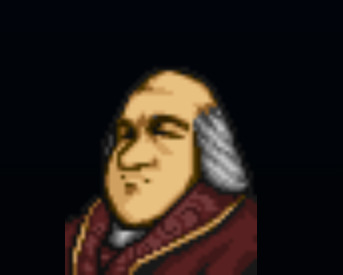
you remember him, right? the famous Agrustian nobleman, defender of Infini Castle...the one and only Macbeth!
keeping in line with FE4 bosses having rather out-of-the-ordinary names (Joe DiMaggio being the foremost example in my mind), this guy's called Macbeth, obviously a reference to the Shakespearean villain.
in Japanese, his name is "マクベス" (pronounced makubesu), literally just "Macbeth."
but wait a sec, マクベス is also Iago's Japanese name! And yet, in the code of Fates, マクベス is romanized as "Makubex", not Macbeth or even Makubesu. what's going on here?
hang on, cause this is where things take a wild turn.
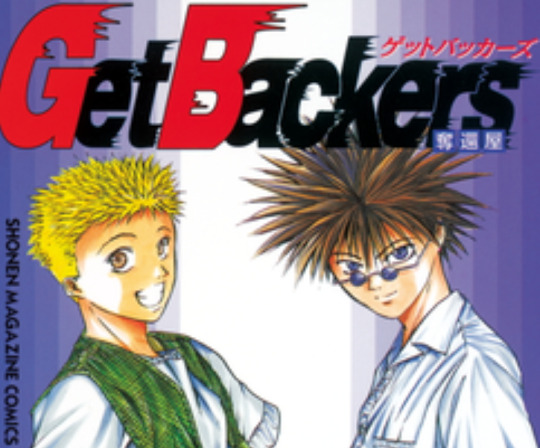
unless you're an even bigger weeb than i am, i'll bet you've never heard of the manga/anime series GetBackers. for the purposes of our discussion, the details of the manga's plot aren't important. what matters is the name of one of the characters: MakubeX (spelled like that, apparently, with the capital X).
who wrote GetBackers? Yuya Aoki. AKA Shin Kibayashi.
Kibayashi is a somewhat well-known manga writer/novelist. His most notable work is probably The Kindaichi Case Files.
He also wrote the Japanese script for Fire Emblem Fates!
So yes, Iago's Japanese name is a reference to the character from GetBackers!
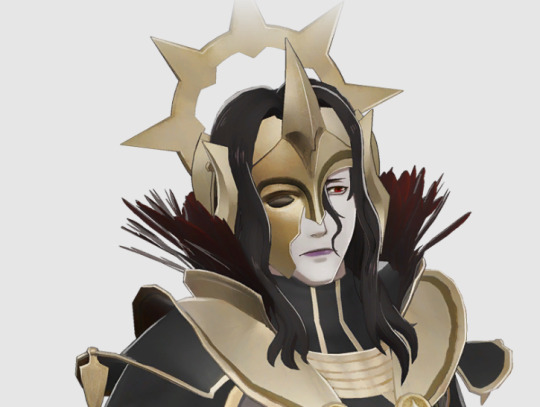
very clever. very interesting. very cunning. there's just one tiny problem.
how is this going to be localized?
GetBackers is not well-known to those of us in the anglosphere. If he was called Makubex or Macbex or whatever in English, 99.99% of players wouldn't understand the reference. It's a name that just sounds weird and unnatural.
well then, why didn't they just call him Macbeth? that's the thing. i'm not 100% sure. maybe the localizers thought it was a bit too on the nose? it'd be like if an FE game featured a pair of lovers named Romeo and Juliet. like, it's just a bit too obvious to name the evil nobleman who loves murder "Macbeth."
so, for some unknowable reason, simply calling him "Macbeth" was off the table. how did the localizers keep the spirit of the name in their translation then? well, they simply borrowed the name of another villain from a Shakespeare play; Iago from Othello.
it's an absolutely perfect name; one that fits him even better than "Macbeth" I think. Macbeth's whole deal in the Shakespeare play is that he really wants to kill the king and take his place on the throne. Iago, meanwhile, remains loyal to Garon to the end. Iago from Othello doesn't have the associations with regicide that might muddy the reference they're going for. Shakespeare's Iago is a spiteful, vindictive, master manipulator. there's also the fact that the name "Iago" reminds English speakers of the henchman to the main villain in the Disney movie, Aladdin. i'm not sure 100% convinced that was part of the localizers' logic, but hey, at the very least, Disney helped enforce this idea of "the name Iago = scheming henchman", which helped make the name Iago even more fitting, regardless of the localizers' intentions.
so, that's the long, wild story of how "Makubex" became "Iago." it's one of my favorite little nuggets of FE trivia. hope you learned something new today, folks. class dismissed.
(source for the above info)
#fire emblem#fire emblem fates#fire emblem conquest#localization#translation#fire emblem genealogy of the holy war#iago fire emblem
12 notes
·
View notes
Note
What do you make of the Fool's Idol and Ranni both being magical witch-dolls with four arms?
The point is not that Ranni is also a doll! The point is that Renna aka Snowy Crone whom Ranni based the doll's body on, was blue-skinned and four-armed! There is already a whole type of such people, after all:

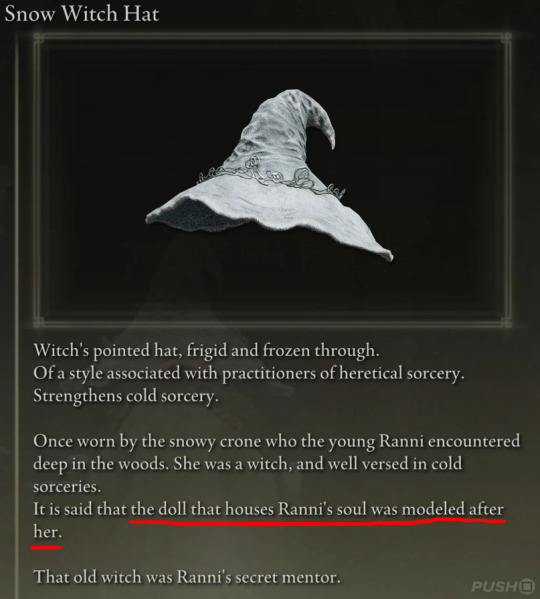
These guys are cursed, and also dead! Similarly to those with Omen Curse, they are unable to return to the Erdtree as they are "exluded" from the circle of life and death that Marika started! (Mind that this type of enemy is also almost exclusive in Liurnia and that secret Carian place, so, areas that have been hostile to Erdtree until Rennala married Radagon!)
They are, in fact, so cursed that anything holy even if it is a healing spell just straight up kills them dshdsfhd

As for Queen of Latria, I do not have many sources to show just yet (Demon's Souls lore is a hindrance in general until I find how to extract all Japanese script for it, dialogues is the biggest problem to find).
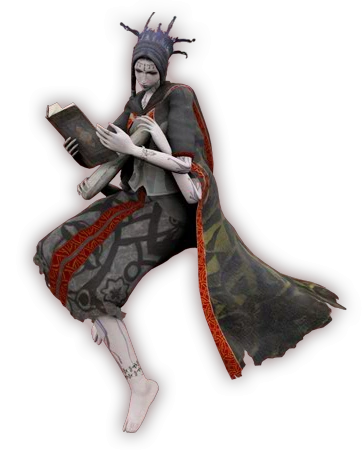
But, the four-armed person was made in likeness of now-defunct Queen that is learned from Soul Ray's description:
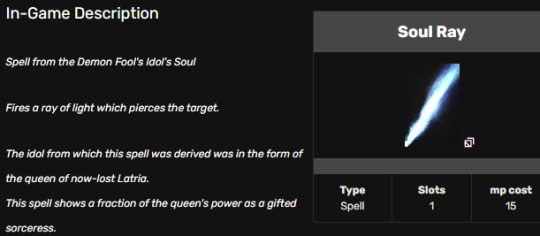


It is even more apparent from the textures, too, but she is clearly organic:
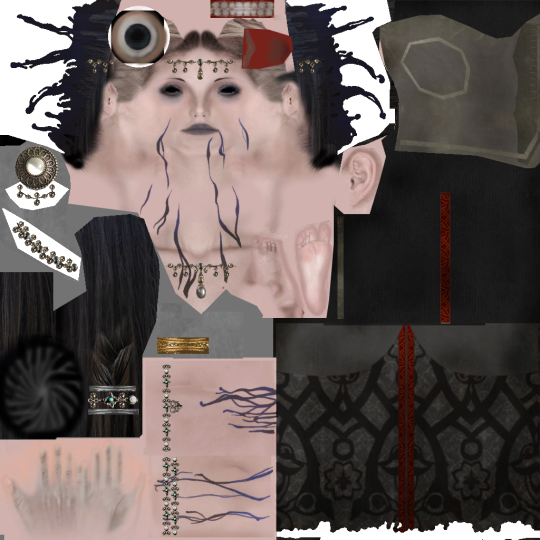
This thing is clearly some sort of a demon! I am not sure whether her actual body was used to create Fool's Idol, or it was indeed created from scratch? The look of brown hair (same as what is depicted on the stained glass featuring Queen of Latria) damaged by blue and gaping hole on her back makes me feel like it's closer to the former. But in any case, it is more of a "came back wrong" situation; she didn't seem to have four arms in reality!
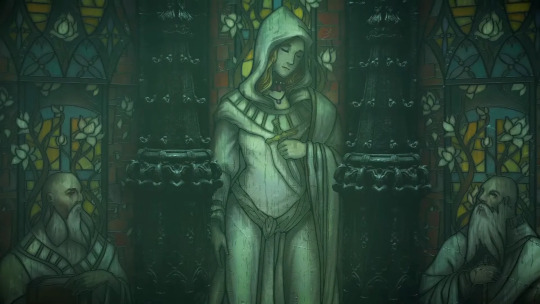
In fact, there is a THIRD case of 'four-armed person who came back wrong' in Soulsborne games:


Darklurker is a one of a kind take on concept of 'Angel' that looks not too similar to Angels from DS3 and is the only one to have four arms! They are met in the Dark Chasm of Old, which seems to be what remained of Chasm of the Abyss! Granted, it isn't even on the same continent; it is literally accessed through portals, and Nashandra is stated to have arrived from overseas!
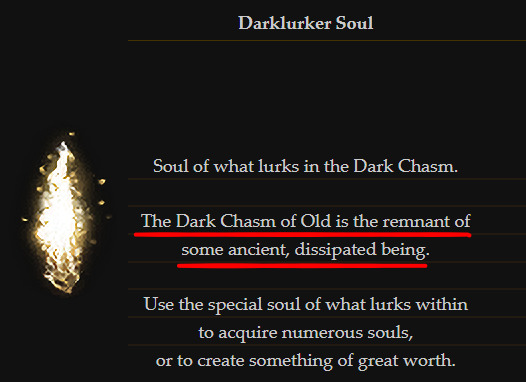
Moreover, Darklurker is unique amongst angels as they literally split, not unlike it happens with rare Twin Humanity! It isn't a common trick for a Soulsborne boss to just create a fake version of them, it is literally the same boss twice now.
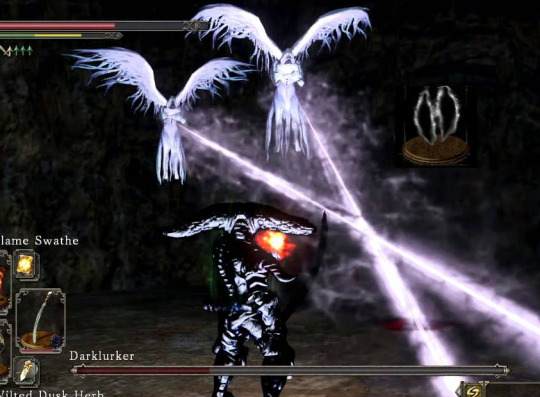
Considering what Dark Chasm of Old is, and that Angels sprout from within the strongest concentration of darkness in a human being, I'll tell you more; Darklurker might be another, secret part of Manus! It isn't himself, of course; Darklurker is as much still Manus as any angel from Dark Souls 3 is still the person they sprouted from. But you get the point!
Naturally that his version of Angel is absolutely unique because Manus was unique; the only person in the setting with a pitch black soul even darker than those of Gael or Midir, the only dark being powerful enough to be reborn as four whole new Dark beings, the only person in the setting who literally radiates darkness by Just Standing There and produces Humanities, the master of the Abyss and not just someone living in there... Also most likely not human but Pygmy, because his mutation was very similar to that of a mad Pygmy king that Shira "killed" (he didn't fully die tho):
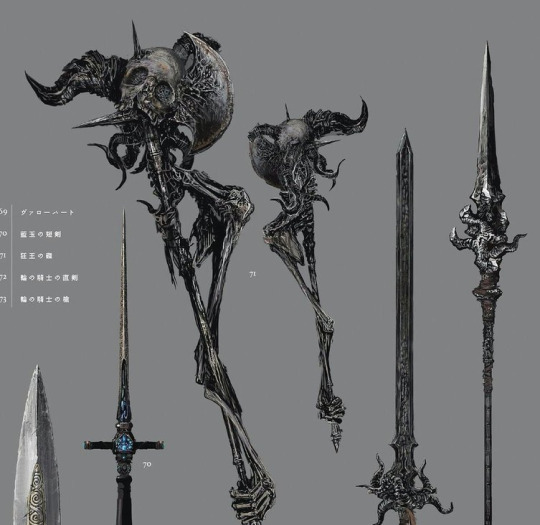
With this all I just feel like it is not very deep, but rather, Fromsoft has a reoccurring take on "came back wrong" character who will be four-armed, cursed and associated with blue color! Fool's Idol is simply the very first case of this trend, just like many things in Demon's Souls!
#demon's souls#fool's idol#elden ring#witch renna#dark souls 2#darklurker#dark souls#ask replies#demon's souls observation#elden ring observation#dark souls observation#dark souls theory
40 notes
·
View notes